
Not to be confused with National Presto, founded in1905 manufacturing pressure canners.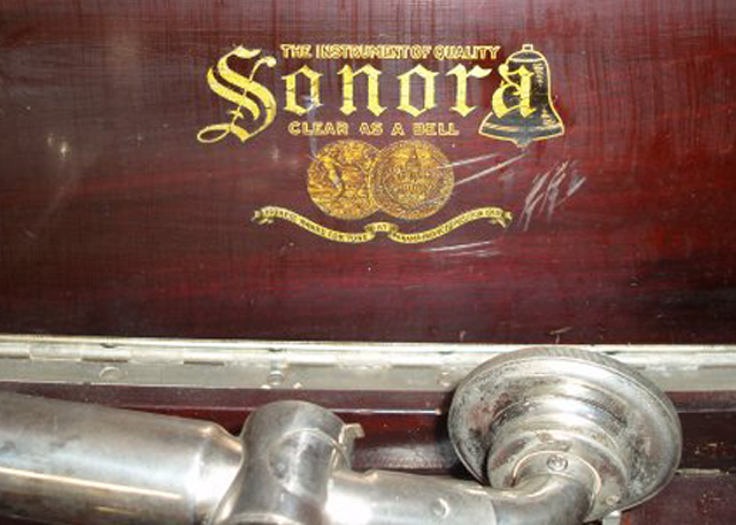
The Presto Products Company was founded in 1915 producing disc recorders and the Sonora phonograph.
Back around 1910, many companies were trying to get into the manufacturing and selling of one of the hottest items on the market, the phonograph. One of these companies was Sonora, which used "Clear as a Bell" as its slogan, touting the fidelity of its machine's sound reproduction.
The Sonora Chime Company was reincorporated in February of 1913 as the Sonora Phonograph Company by its founder George Brightson. It was located at 78 Reade St., New York City.
 An earlier attempt by the Sonora Phonograph Company in 1909 to sell horns and hornless machines made by a Swiss company named Paillard had run into legal problems and went nowhere. Paillard at that time was
An earlier attempt by the Sonora Phonograph Company in 1909 to sell horns and hornless machines made by a Swiss company named Paillard had run into legal problems and went nowhere. Paillard at that time was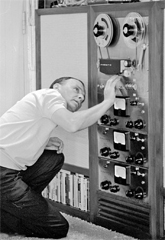 also a major manufacturer of music boxes. Sonora Phonograph factory Saginaw, MI (left photo from Antique Radio Forums).
also a major manufacturer of music boxes. Sonora Phonograph factory Saginaw, MI (left photo from Antique Radio Forums).
A company named Presto Products produced the Sonora phonographs. Sonora also bought thousands of itsphonograph motors from a Swiss Company named Bawdy.
Sonora was one of the companies that were allowed to exist by the big three (Victor, Edison and Columbia) to avoid threats of a trust suit. Because Sonora had paid a lot of money in royalties on patents held by the big three on a per unit basis, it could only compete with them on their high-end machines.
In fact, Sonora ads say, "The Highest Class Talking Machine in the World." The prices ranged from $60 to $2,500. The hardware varied from unit to unit indicating that they were most likely made by various manufactures. The fancy cabinets were Sonora's best selling point, along with its "award-winning magnificent, pure, clear, rich mellow tone." In 1915, the Sonora Phonograph Company won the award for tone at the Panama Pacific Exposition.
Sometime in the middle of 1919, the Sonora Phonograph Company opened an assembly factory in Saginaw, Michigan, and the company headquarters was moved there in the summer of 1927. At that time, Michigan was the center of cabinet production, especially in the Grand Rapids area. Sonora at this time also had a branch in Oakland, California, that later became Magnavox. Sonora went out of business in 1932, and emerged later as the Duall Company in 1932, and became Presto Recording Corp. in 1933. The company was incorporated in New York in 1934 by Morris Gruber, George Saliba, Aaron Benjamin, and Mr. Sholes (Mr. Benjamin's son-in-law).
Here's a bit more from Alan C Graves.
PRESTO's most important contribution to the world of Broadcasting and Recording was the lacquer coated instantaneous recording disc. PRESTO was one of three 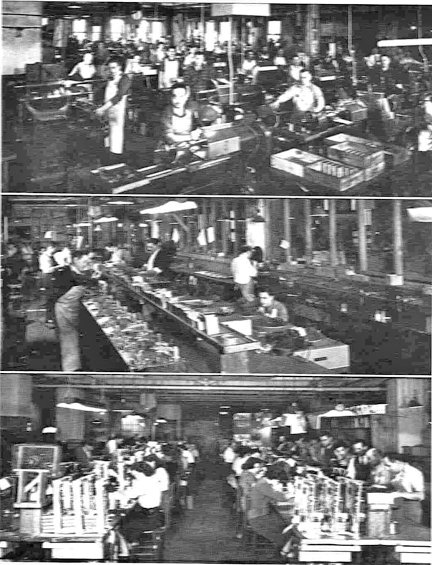
 companies to have developed versions of this disc - the others were in France and England - and the PRESTO version was introduced to the US in the fall of 1934, after several years of experimentation.
companies to have developed versions of this disc - the others were in France and England - and the PRESTO version was introduced to the US in the fall of 1934, after several years of experimentation.
The disc consisted of an aluminum plate coated with a cellulose nitrate based lacquer (not "acetate"), and offered dramatic improvement over embossing uncoated aluminum and pre-grooved plastic discs formerly used for instantaneous recording. While those systems had been patented, cutting a groove in a soft material was now in the Public Domain. It was a common industrial practice to coat aluminum with various substances. Thus the US Patent Office deemed that making and cutting lacquer blanks was nothing new, and thus unpatenable. This resulted in several companies making similar blanks soon after PRESTO introduced their disc.
The "PRESTO DISC" quickly became the industry standard, and by 1936 PRESTO recording equipment was being installed in stations nationwide. The PRESTO system was the foundation of NBC's Radio Recording Division, which began operation in the spring of 1935, and was also adopted by CBS when that network began its recording service in 1938.
While there have been refinements over the decades, the basic coated lacquer disc remained the industry standard for instantaneous recording, and is used to this day in the preparation of master discs for analog phono records. The development of the coated disc is a vital accomplishment in the technology of recorded sound, and PRESTO got the credit.
One of the earliest documented use of PRESTO recorders for delayed broadcast was of the Hindenburg disaster in May of 1937. Reporter Herb Morrision and engineer Charlie Nehlsen had been invited to record interviews of passengers embarking from the voyage. History tells of a different story. THE PRESTO HISTORY PAGE
Presto Recording Corporation was sold July 2, 1956 to Unitronics Corporation of Long Island City,NY.Six months earlier Unitronics had purchased the David Bogen Co. Presto was merged with the David Bogen Co., and became  the Bogen-Presto division (note the 1959 & 1960 ads below). Bogan manufactured 16 inch transcription turntables in the early 1930's and was one of the few competitors of Western Electric. Bogan and Presto had an earlier relationship importing and distributing phonographs from Europe.
the Bogen-Presto division (note the 1959 & 1960 ads below). Bogan manufactured 16 inch transcription turntables in the early 1930's and was one of the few competitors of Western Electric. Bogan and Presto had an earlier relationship importing and distributing phonographs from Europe.
On January 6, 2020 Larry DeVivo shared the following Presto ads, information and photos.
"I'm in the process of recreating a 1960’s 3 track studio myself. I have the Presto 850 from Mark Wilder, I have a 12x3 Langevin tube console from UCLA’s theater, film and television department (being modeled to include a two buss section as well speak), I have 6 Altec 9061A equalizers and two Langevin 253 EQ’s built into channels 1 and 2 of the console, I have a custom made 3 channel Highland Dynamics BG2 vari MU limiters (switchable between RCABA6A circuitry and Abbey Road RS124 circuitry). I have a mono EMT 140 plate reverb for the center channel and an AKG BX20 for the stereo sides. It has taken me 15 years to acquire all this equipment... but what a sound."
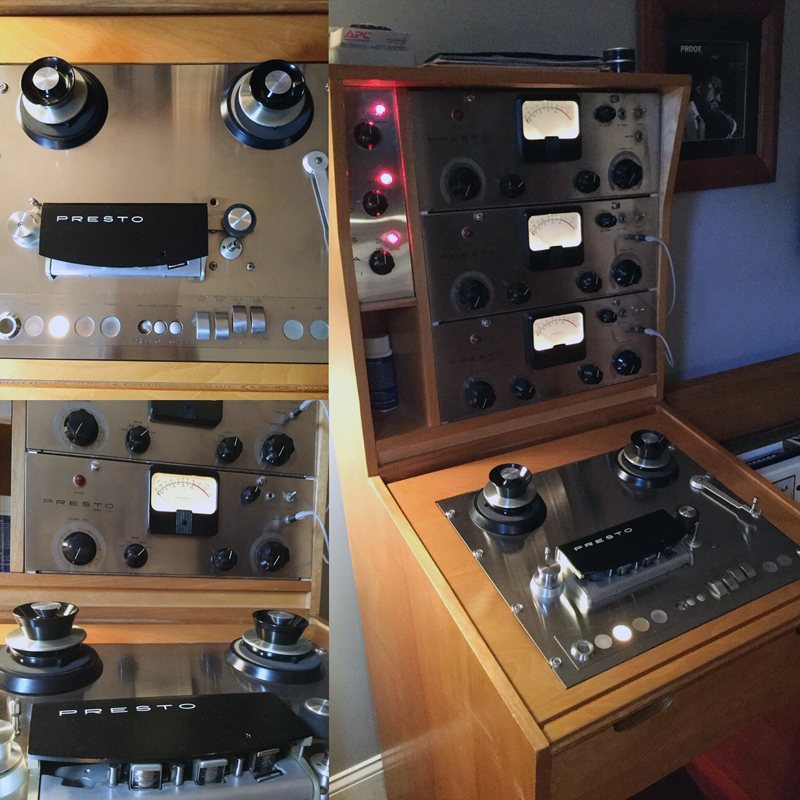
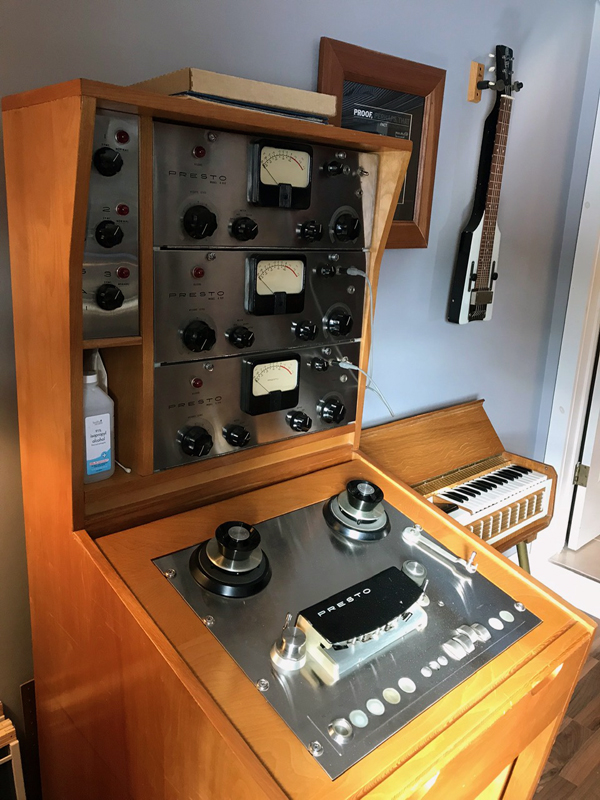

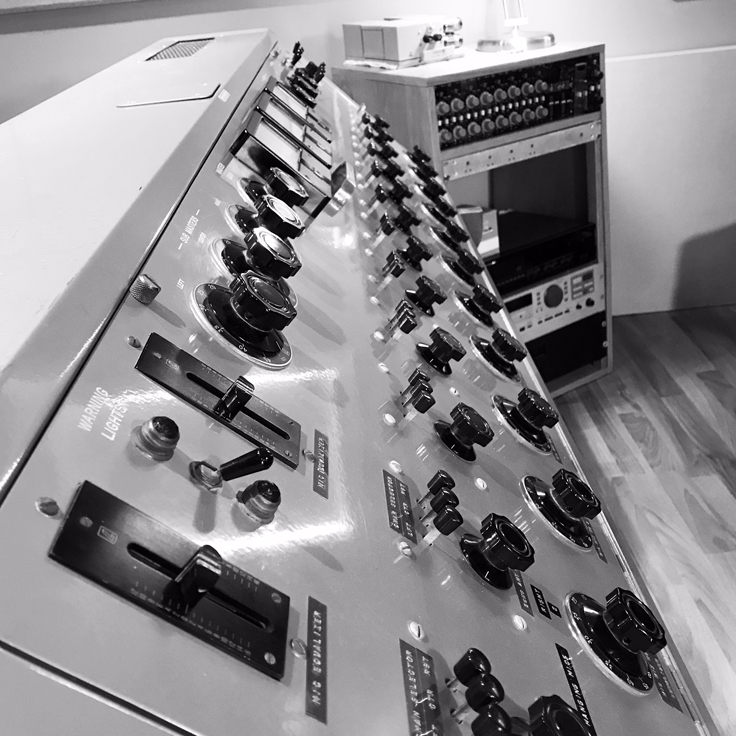
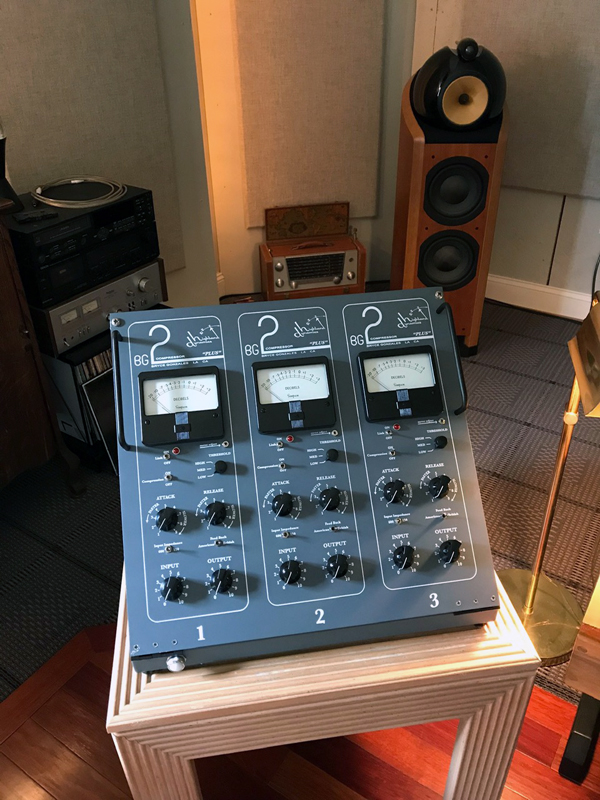

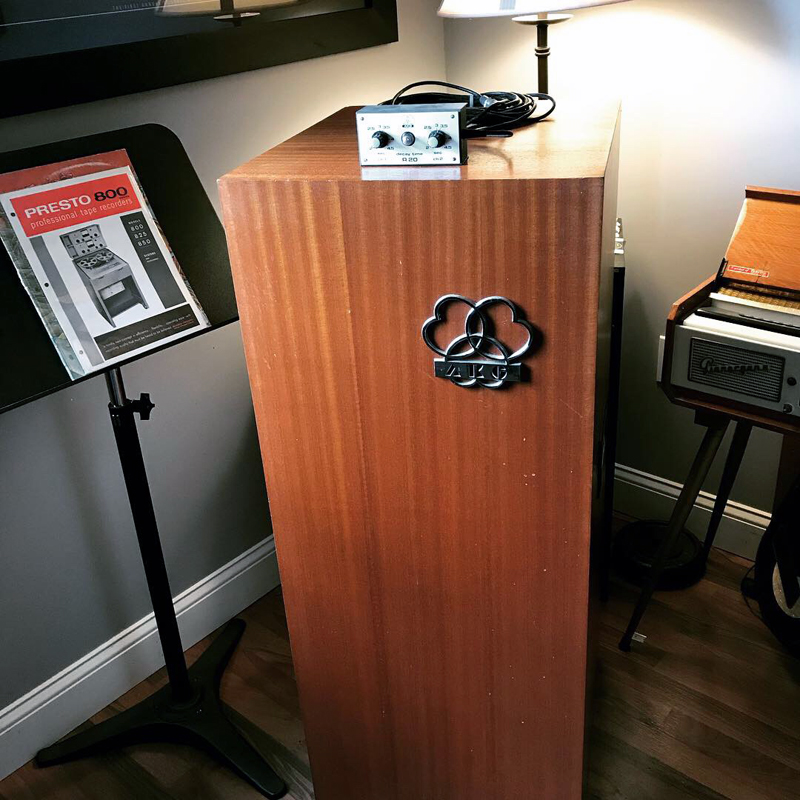
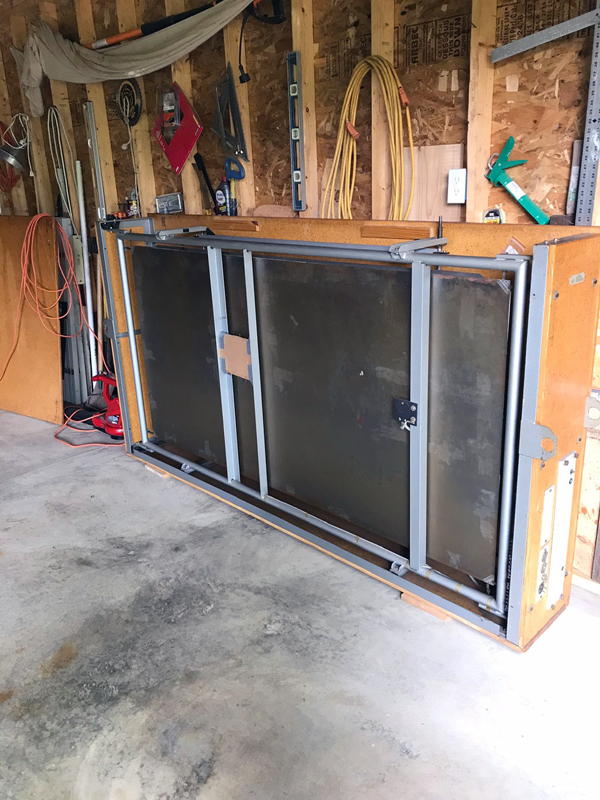
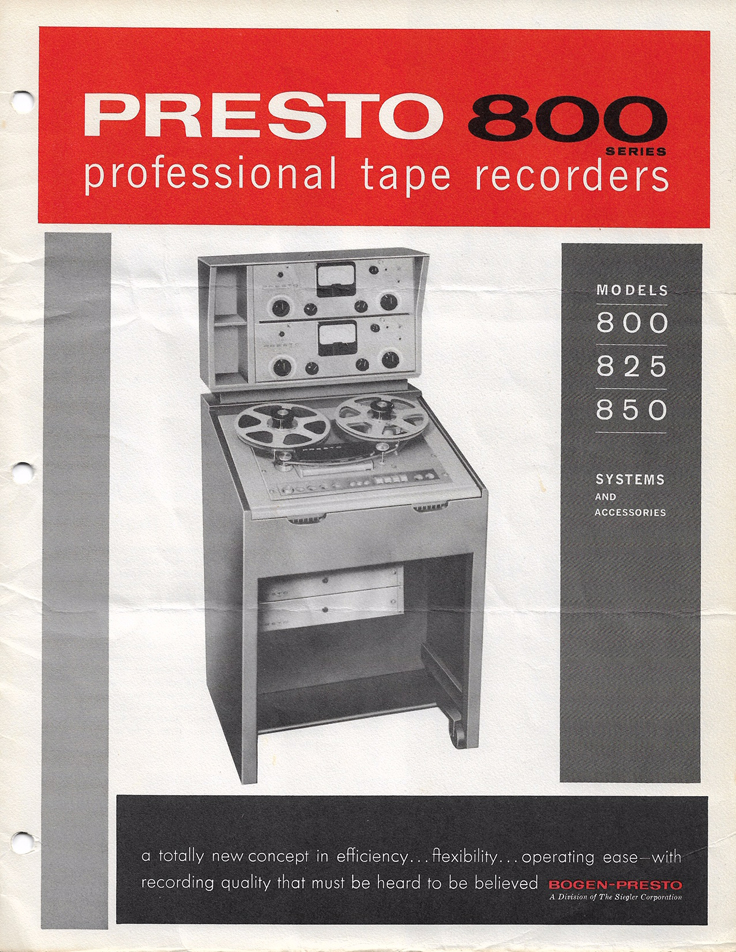

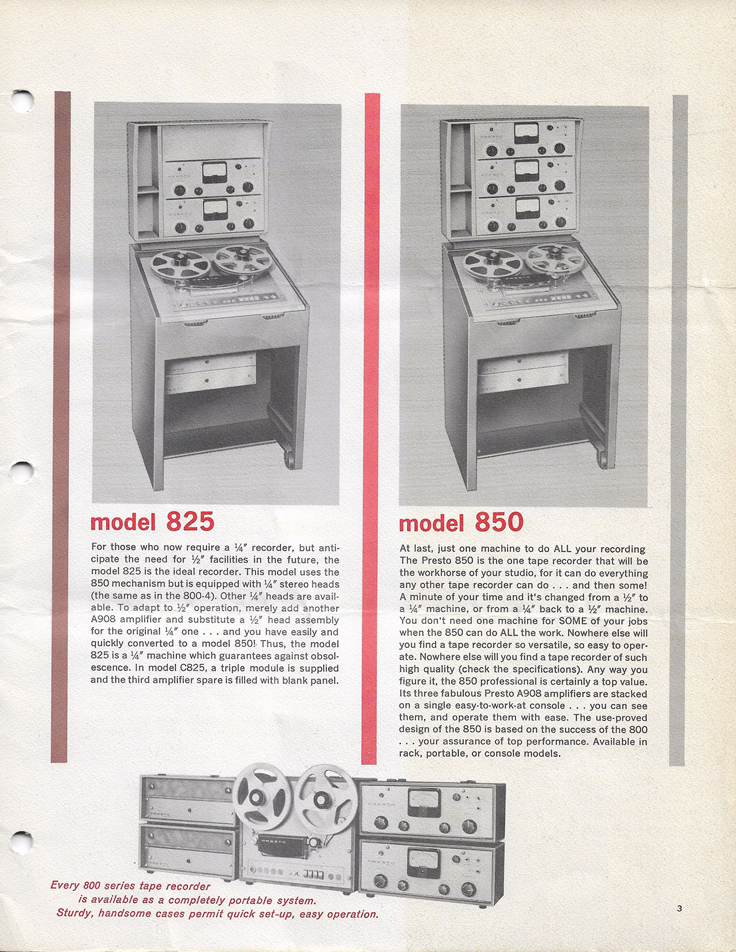

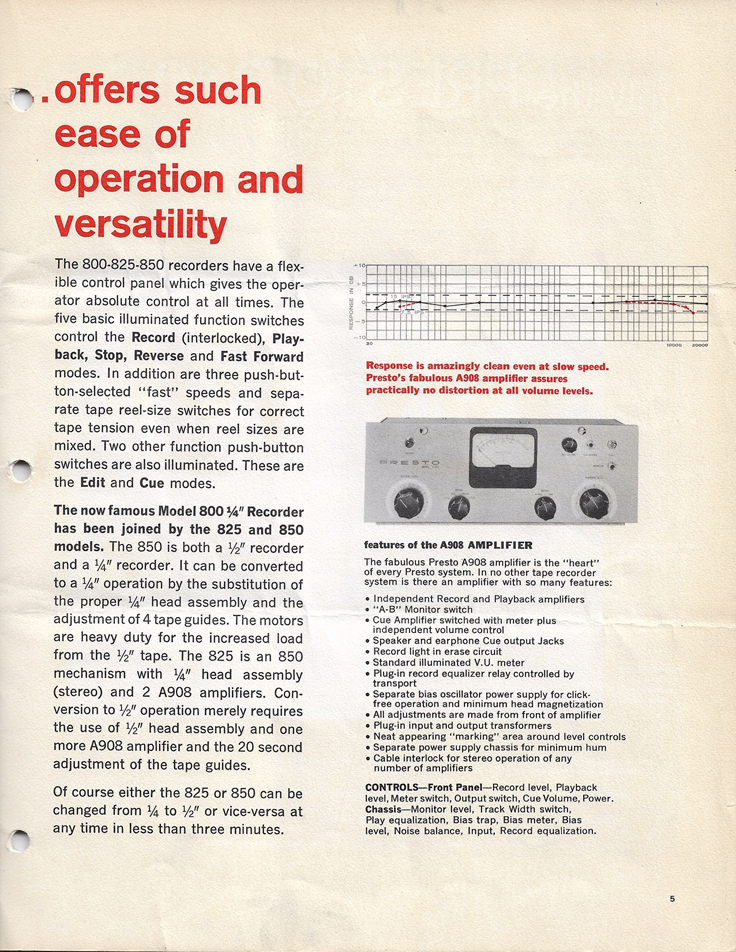
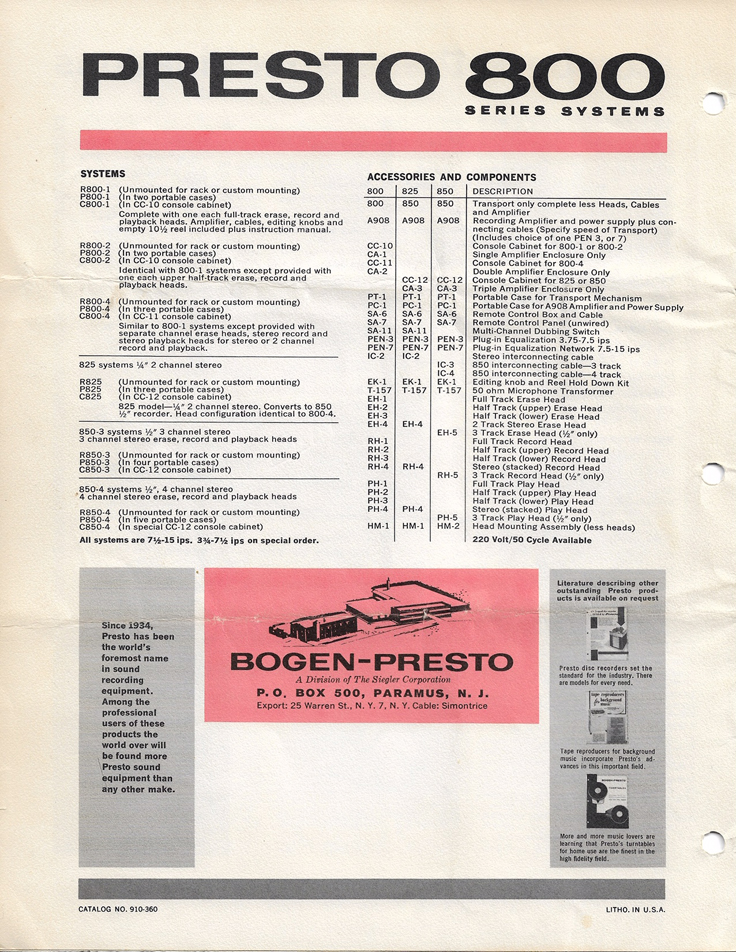
Presto Recording Corporation sold disk and reel to reel tape recorders to the radio and broadcast industry. Here are a few ads for their recorders.
1937
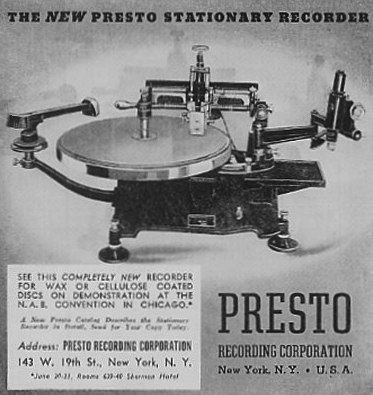
|
1938
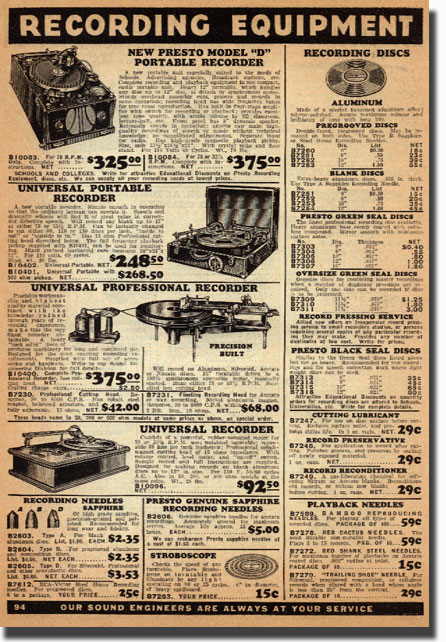
|
1939
 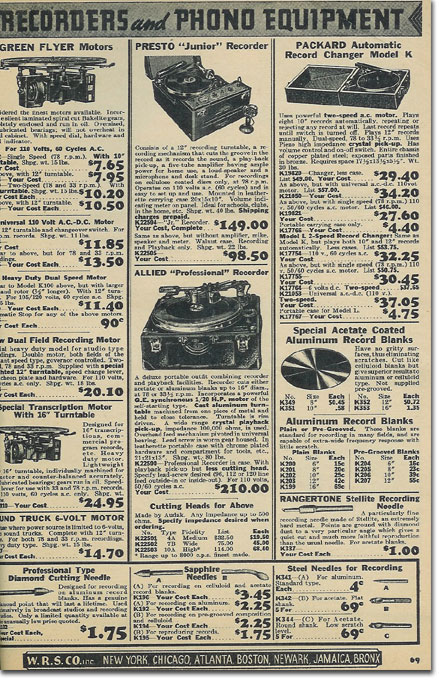
|
1940
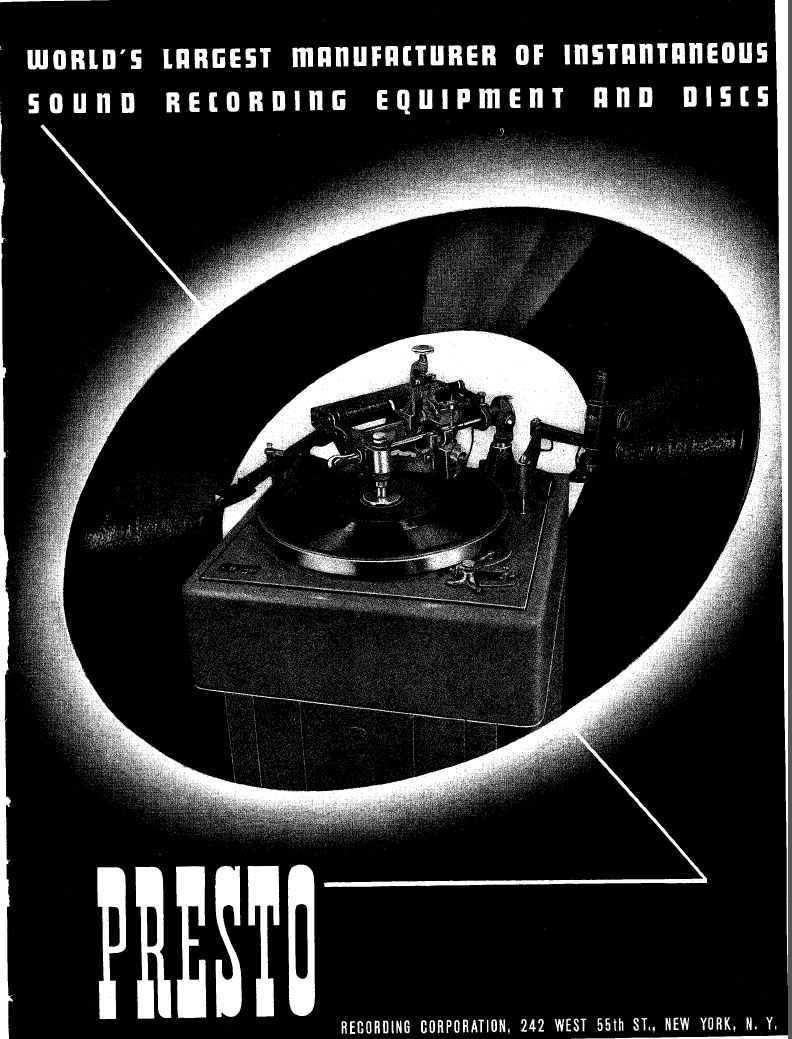 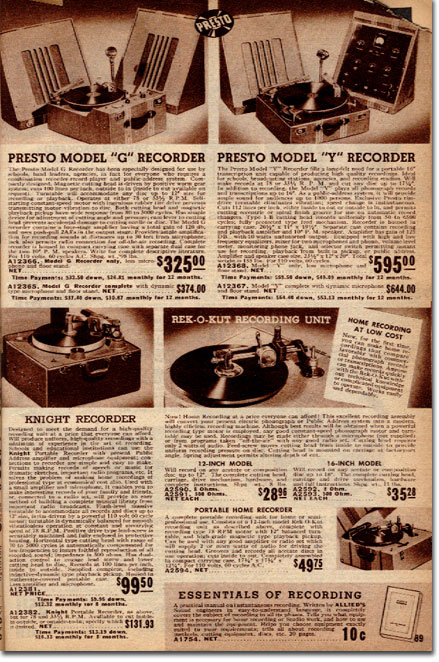
|
1942
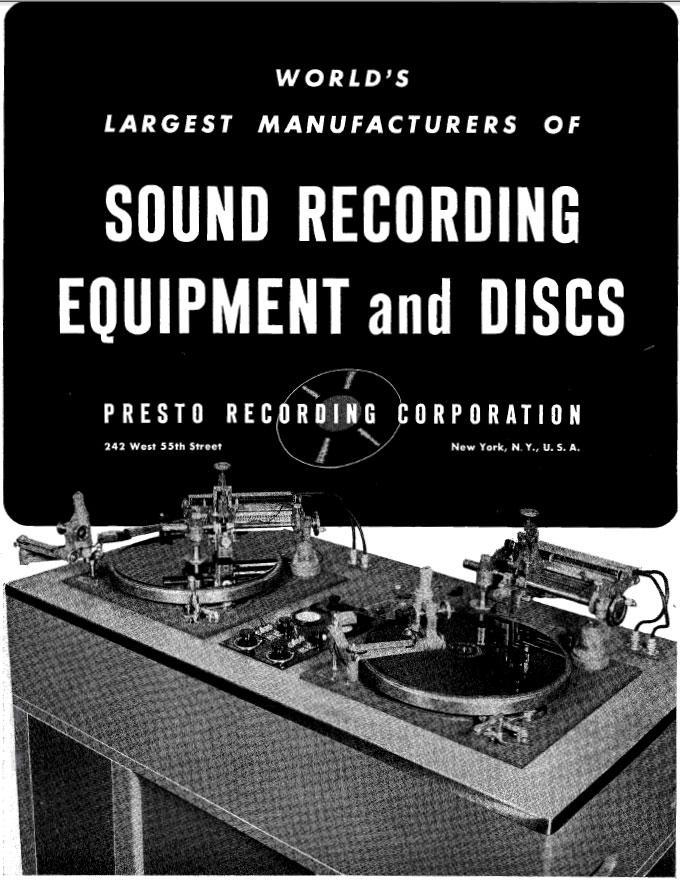
|
1946

|
1947

|
|
1948
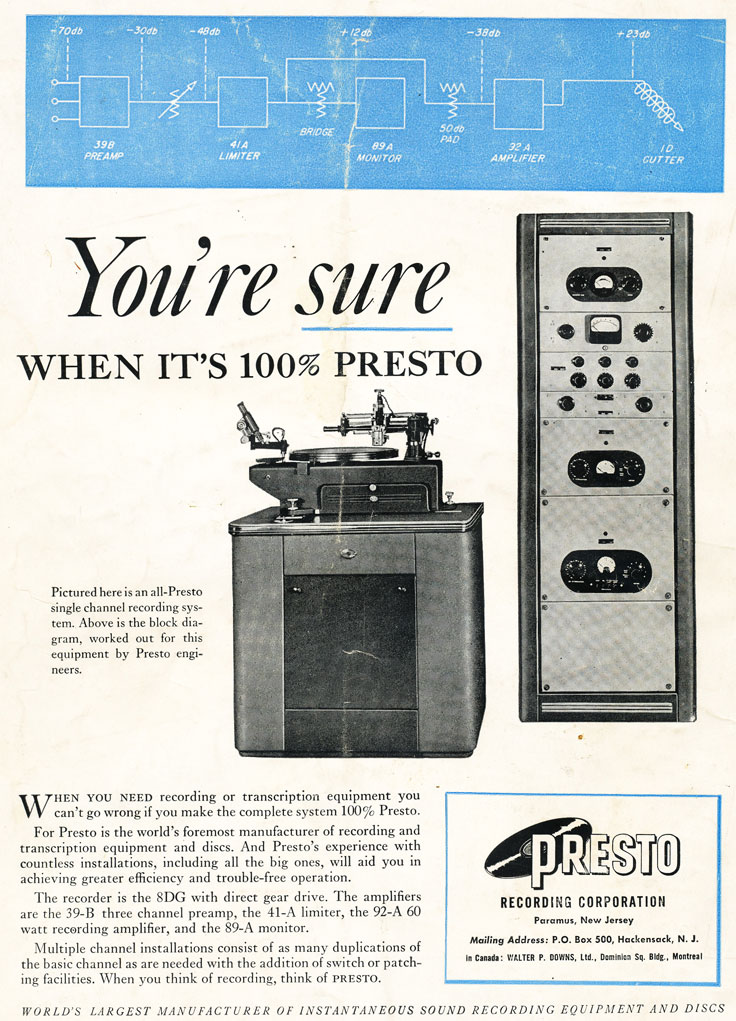
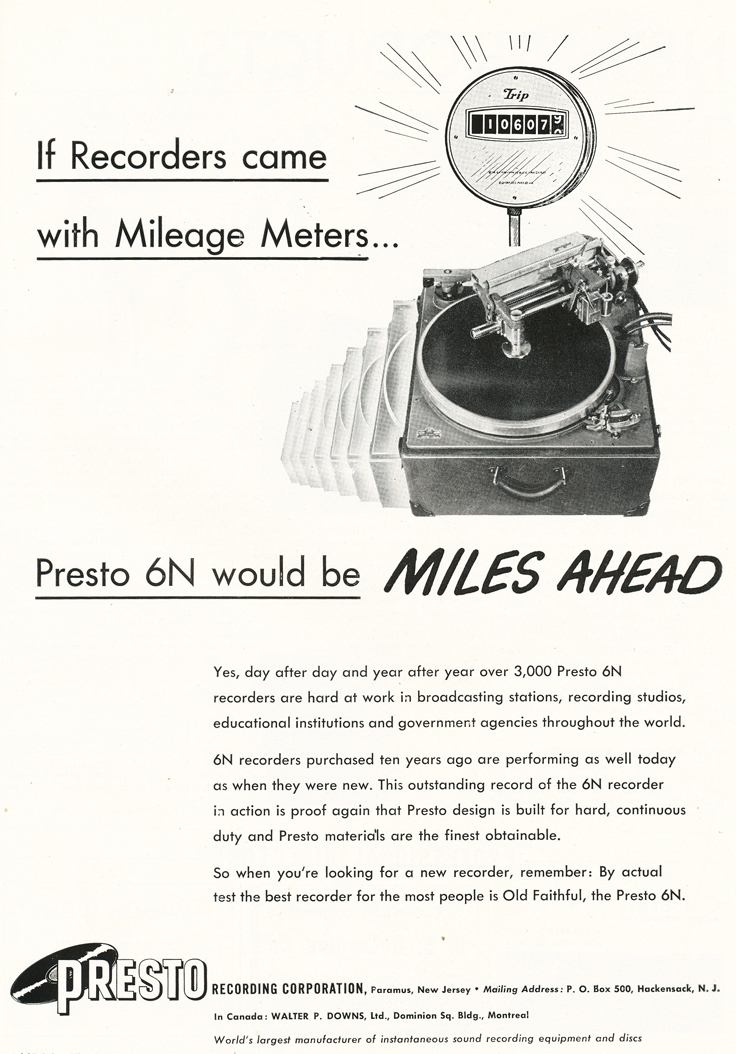
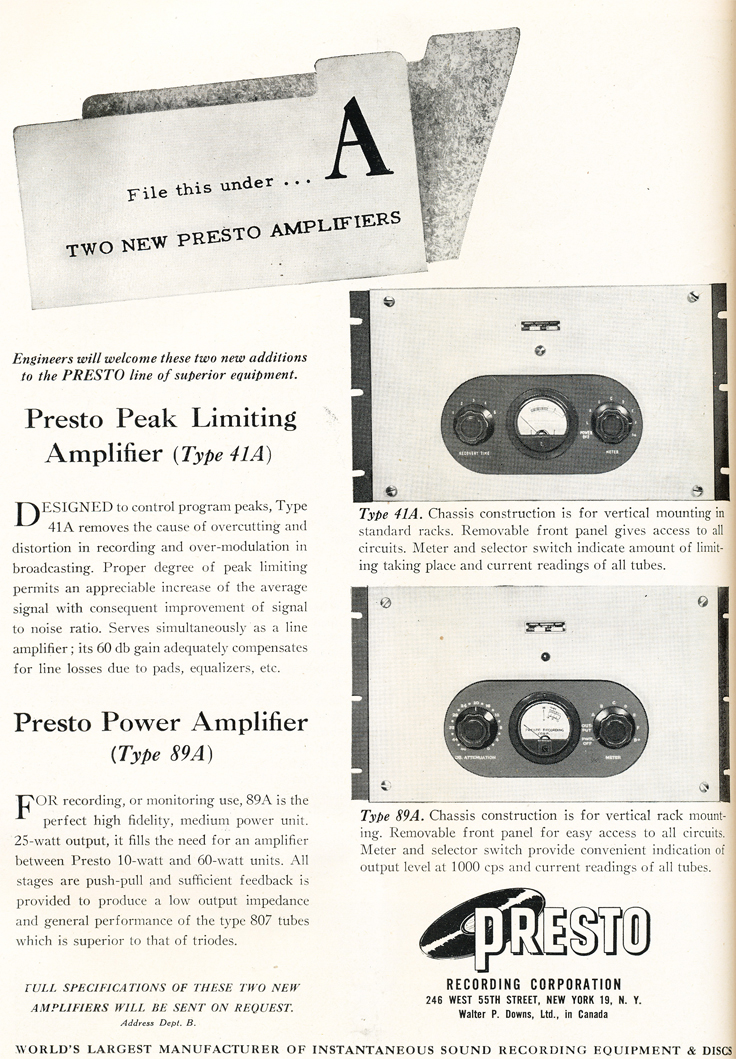
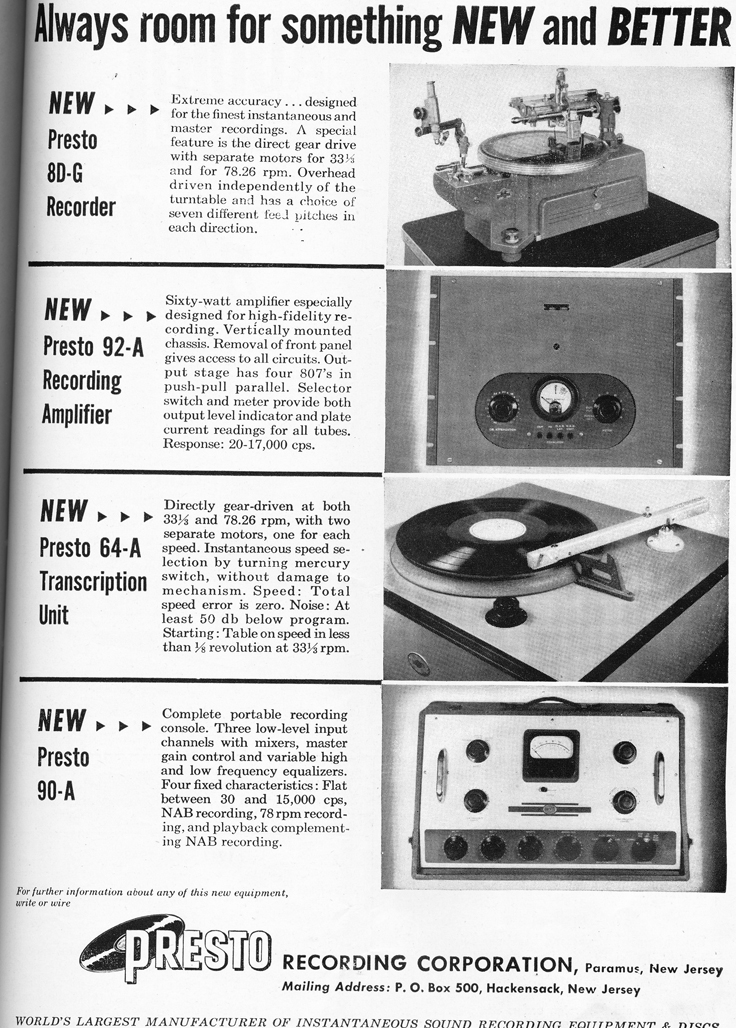
1949
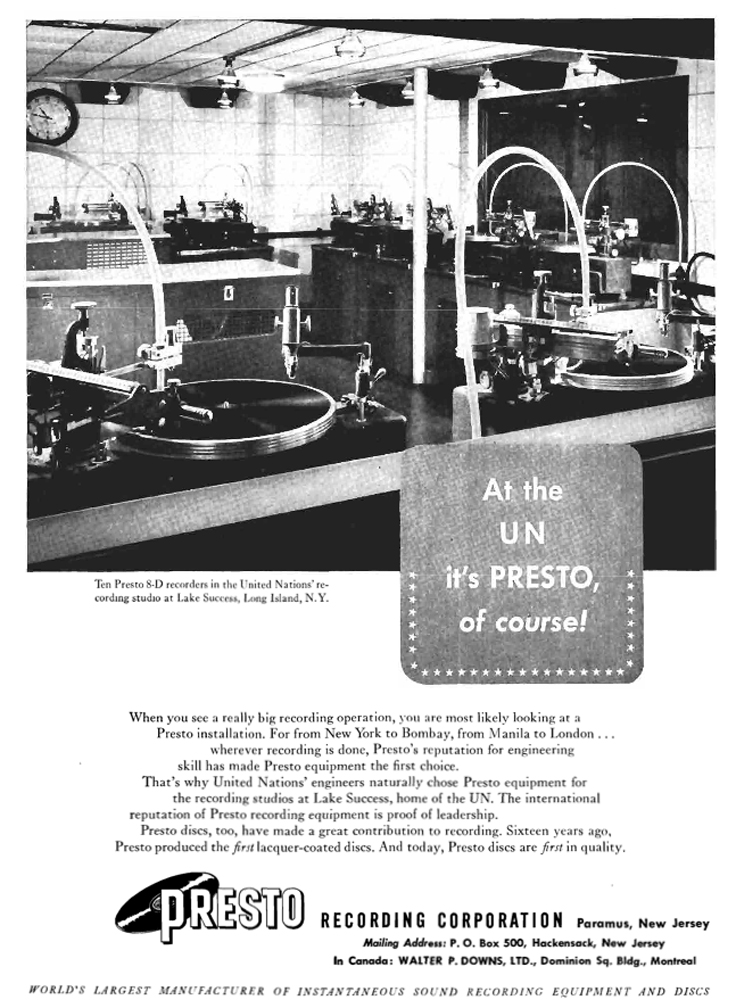
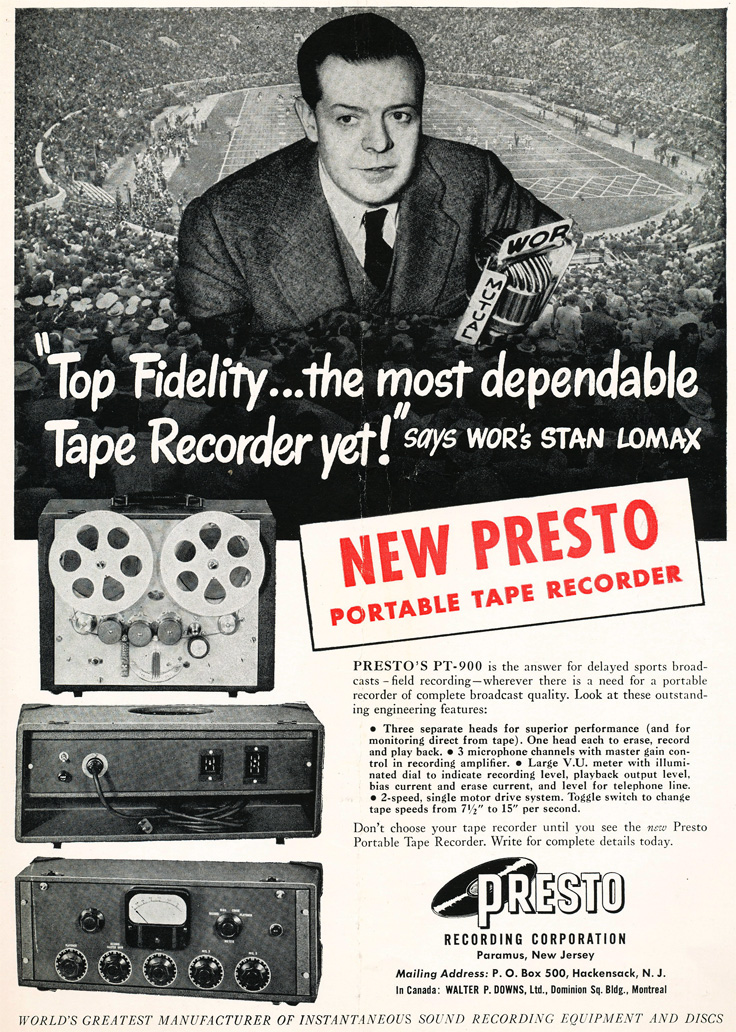
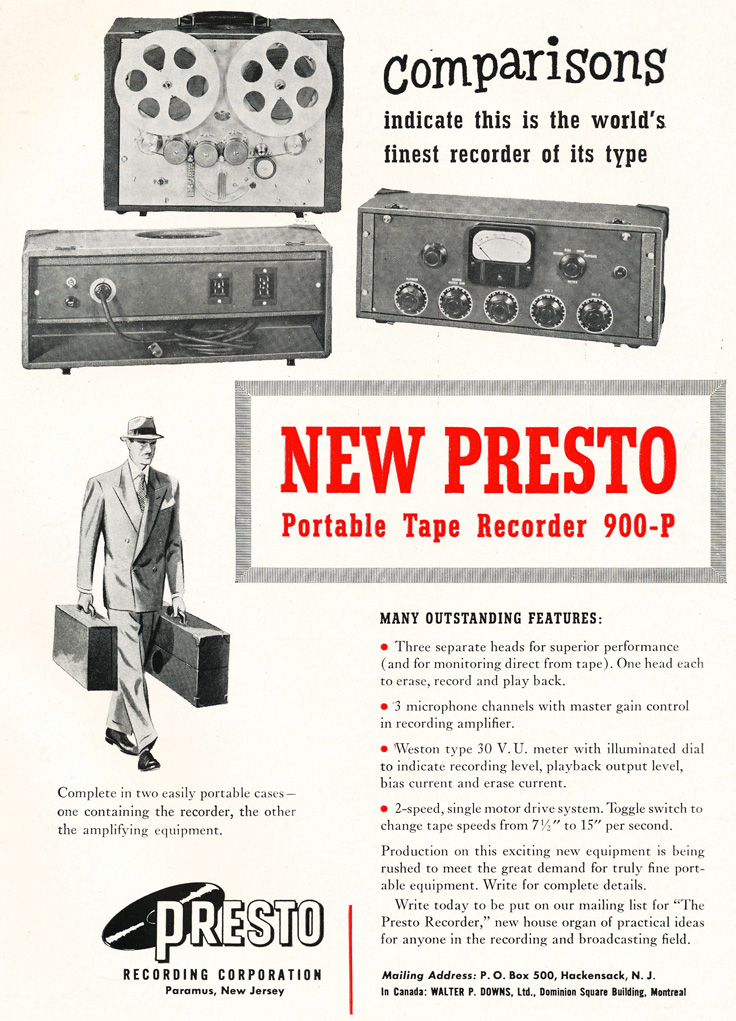
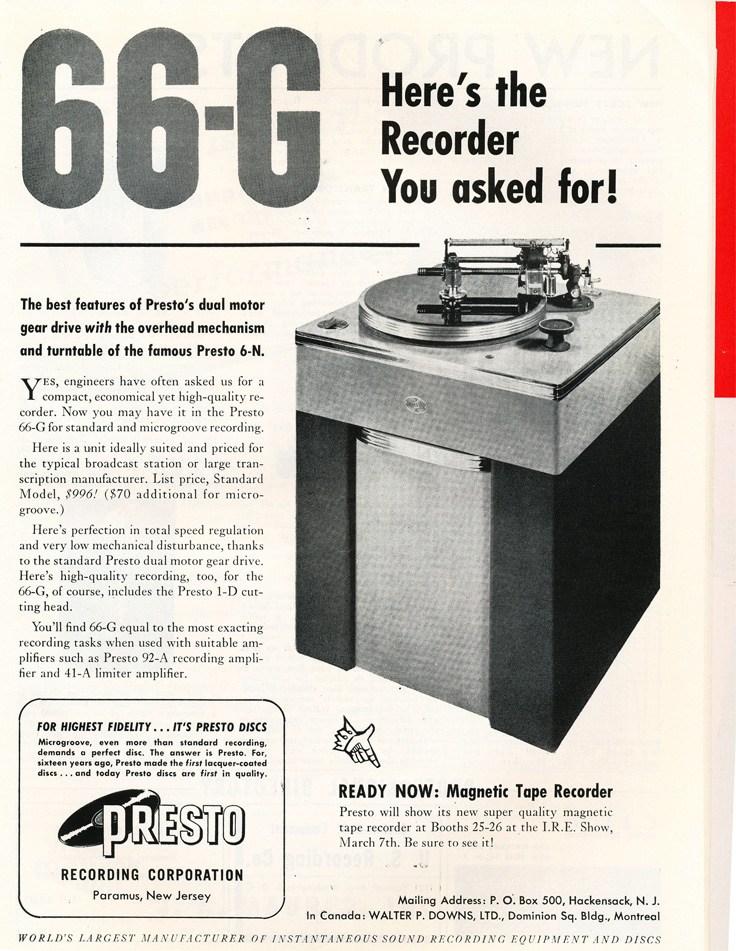
1950
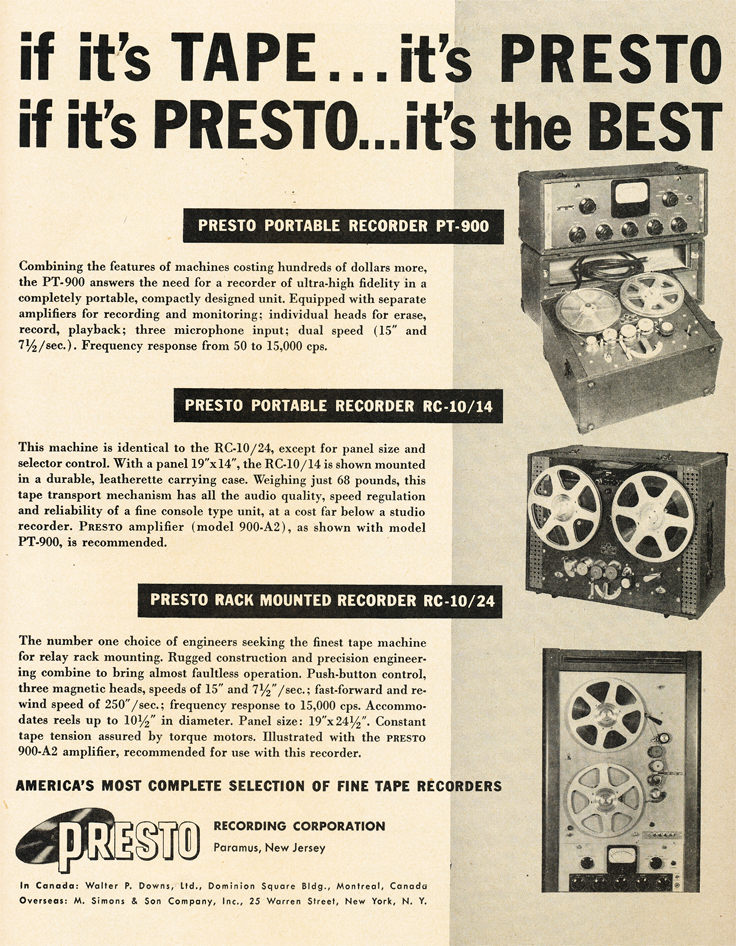

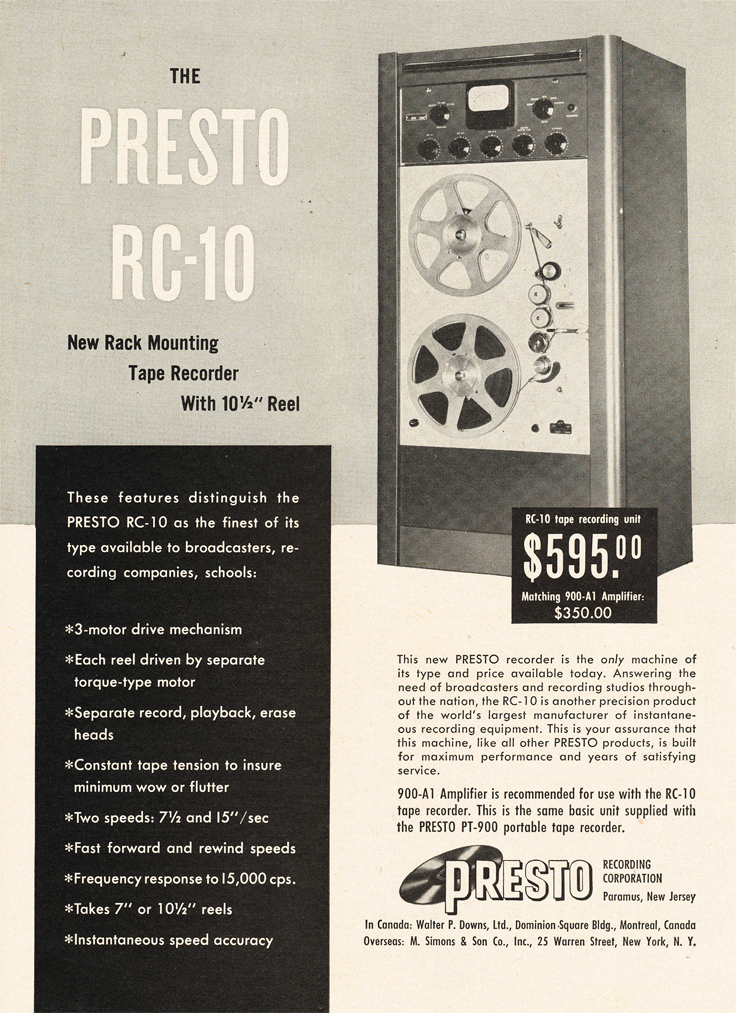
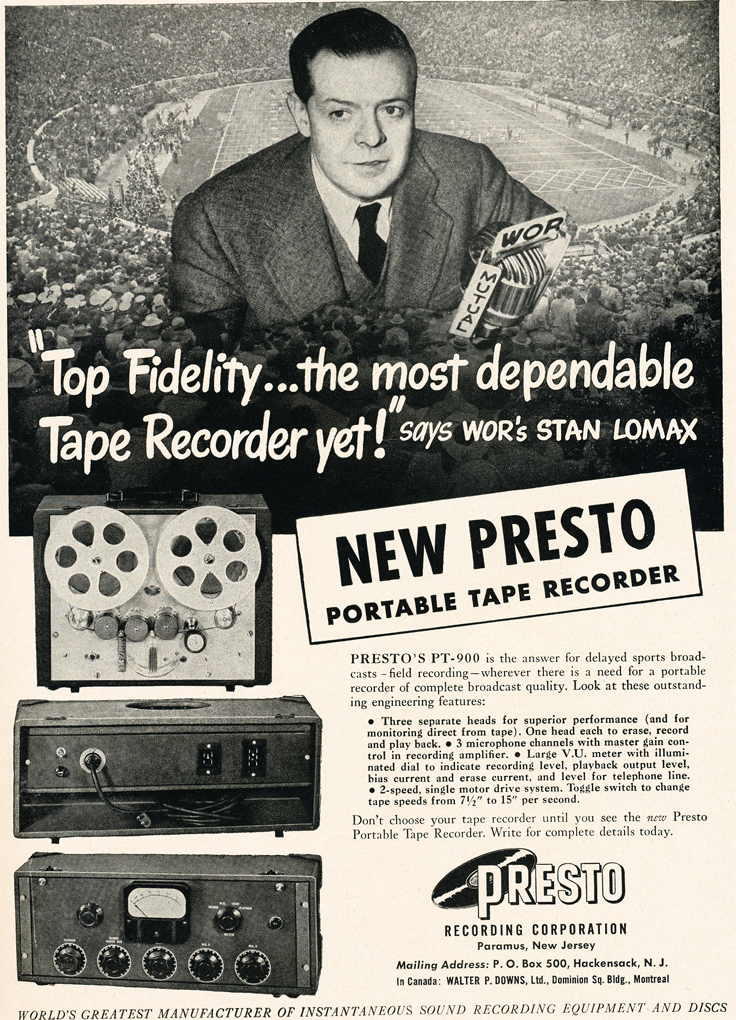
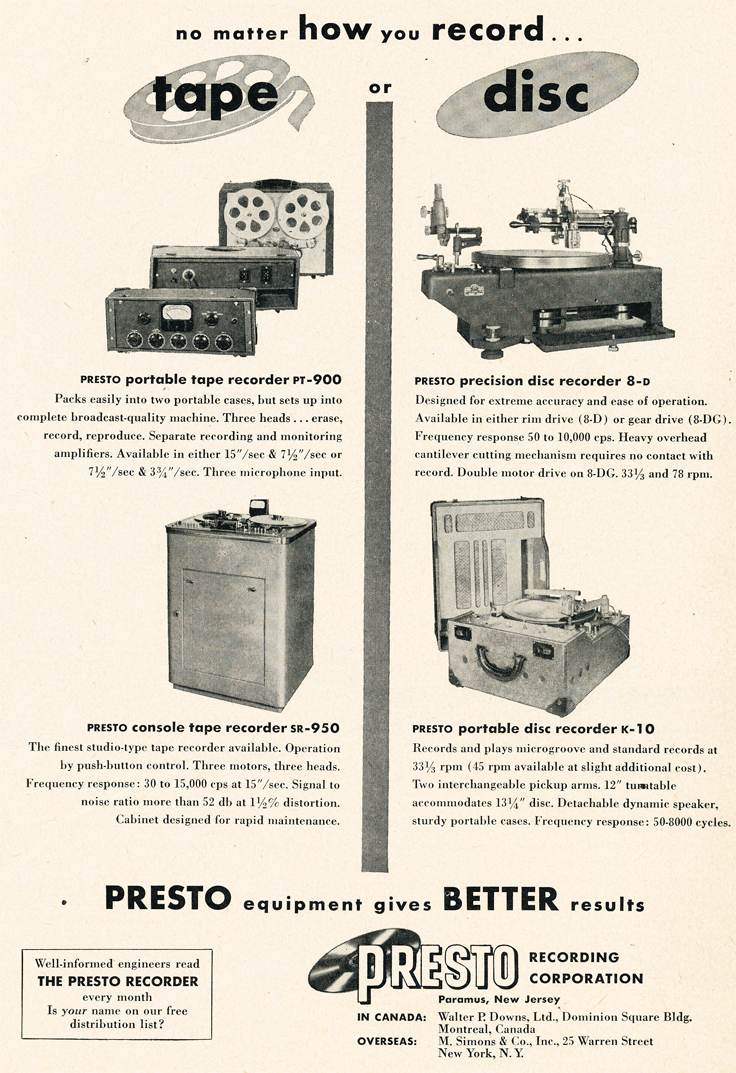
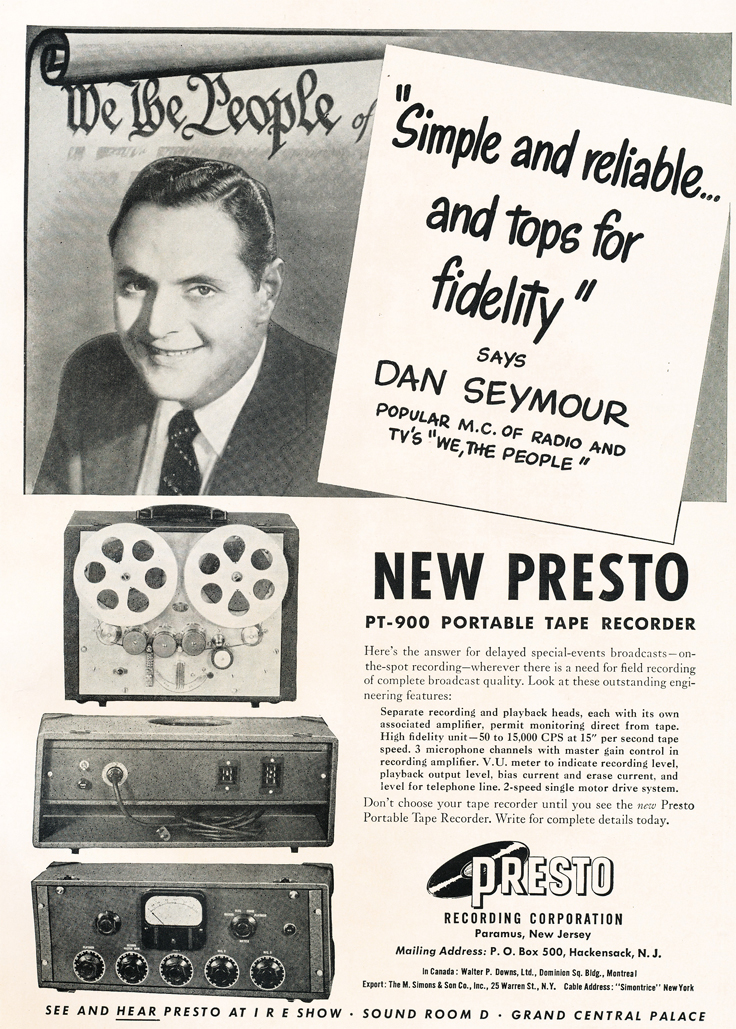
1951
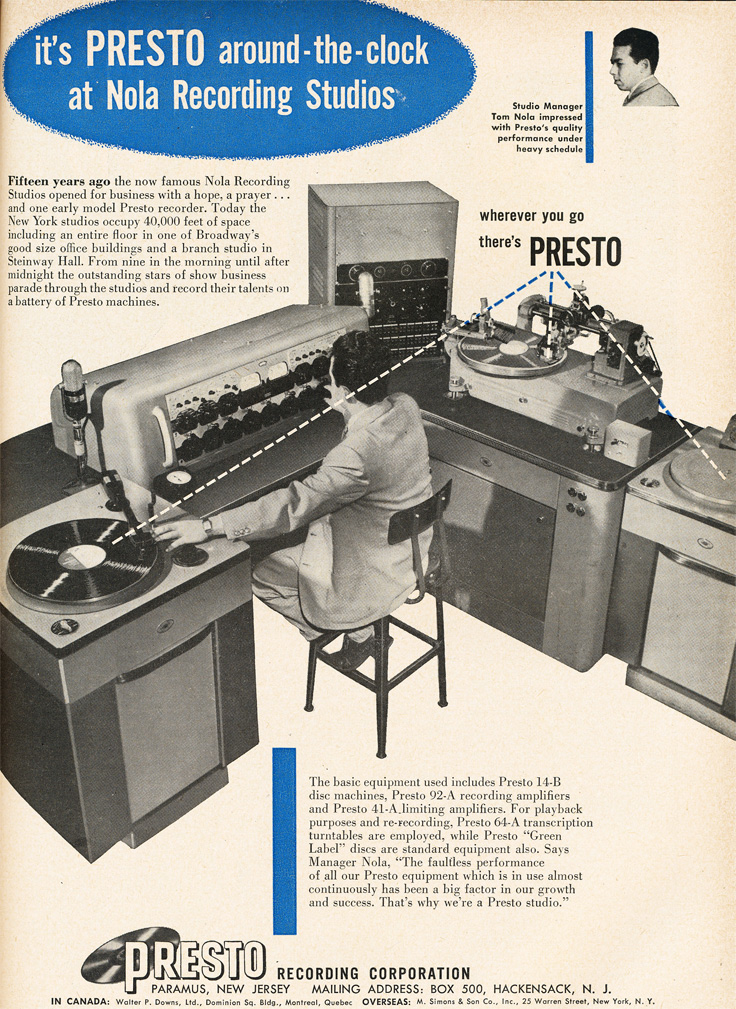
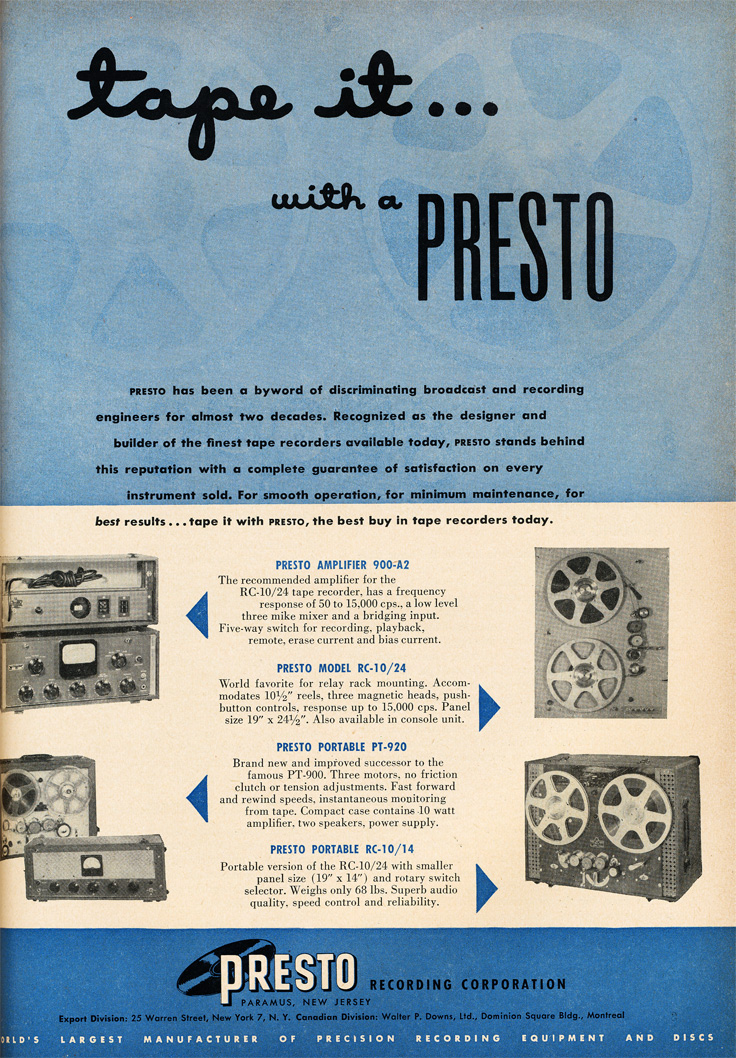
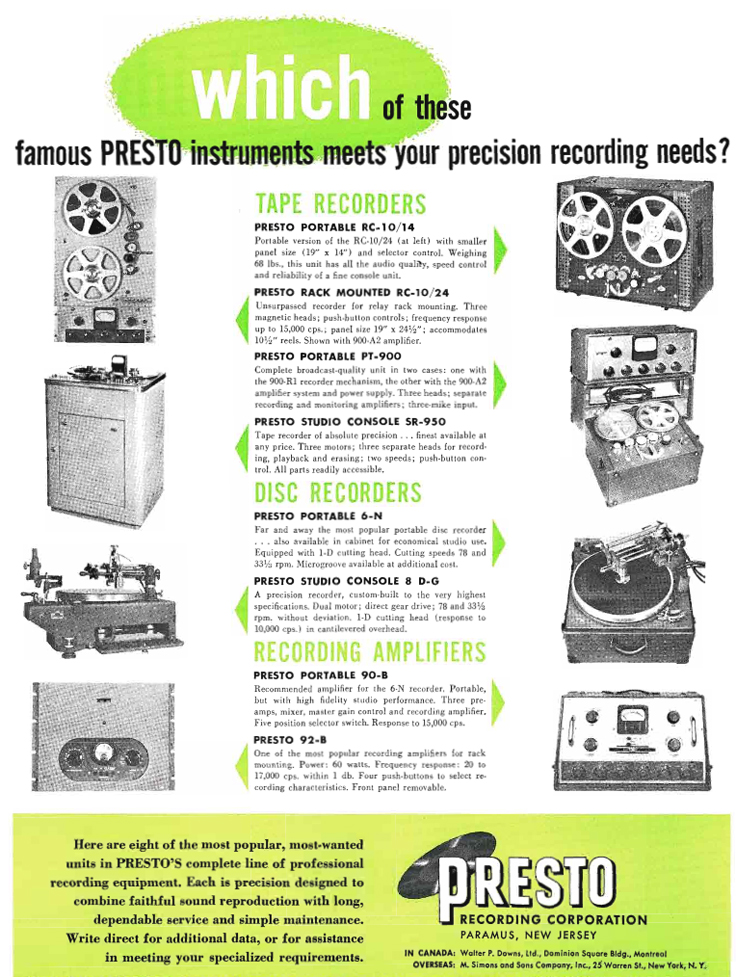
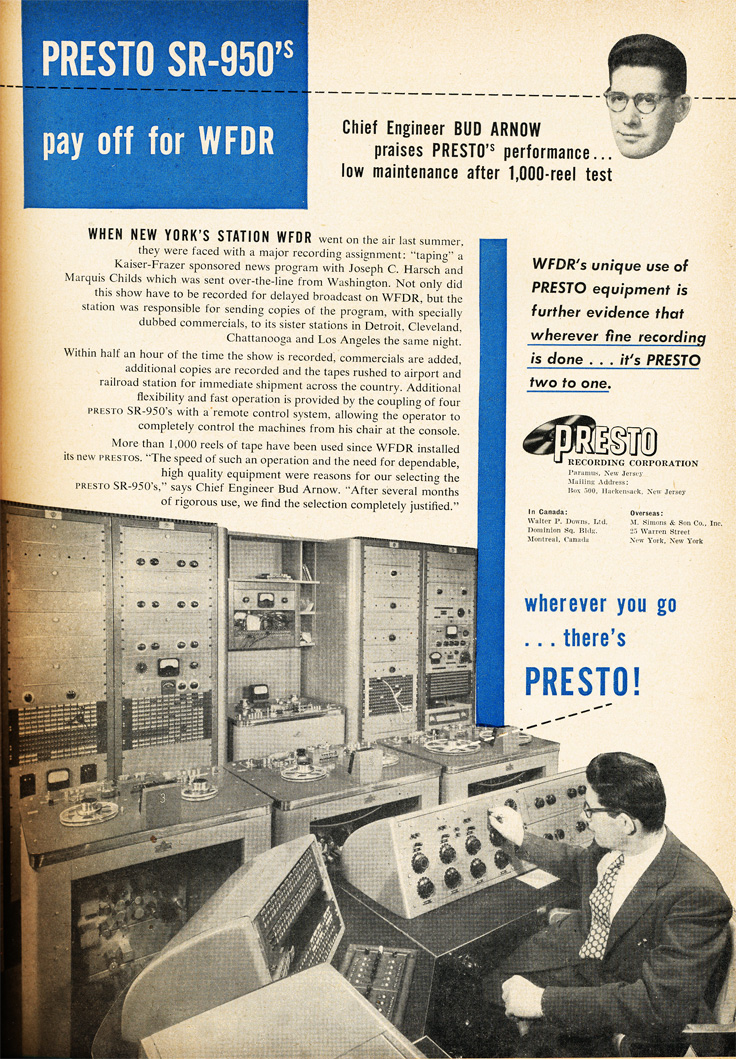
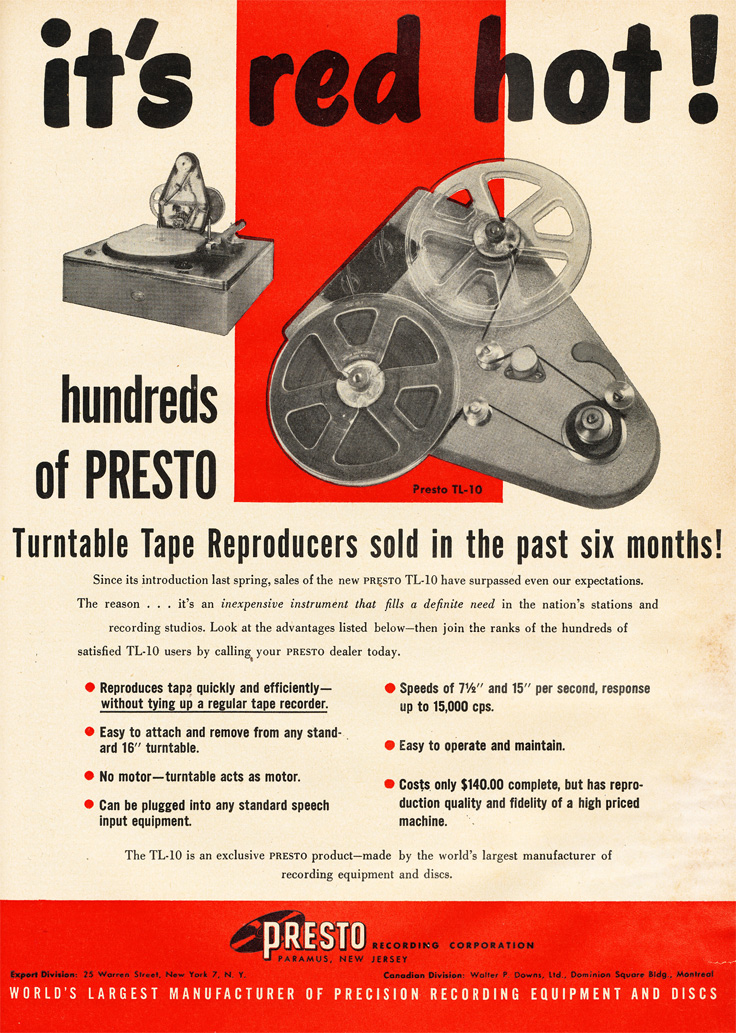
1952
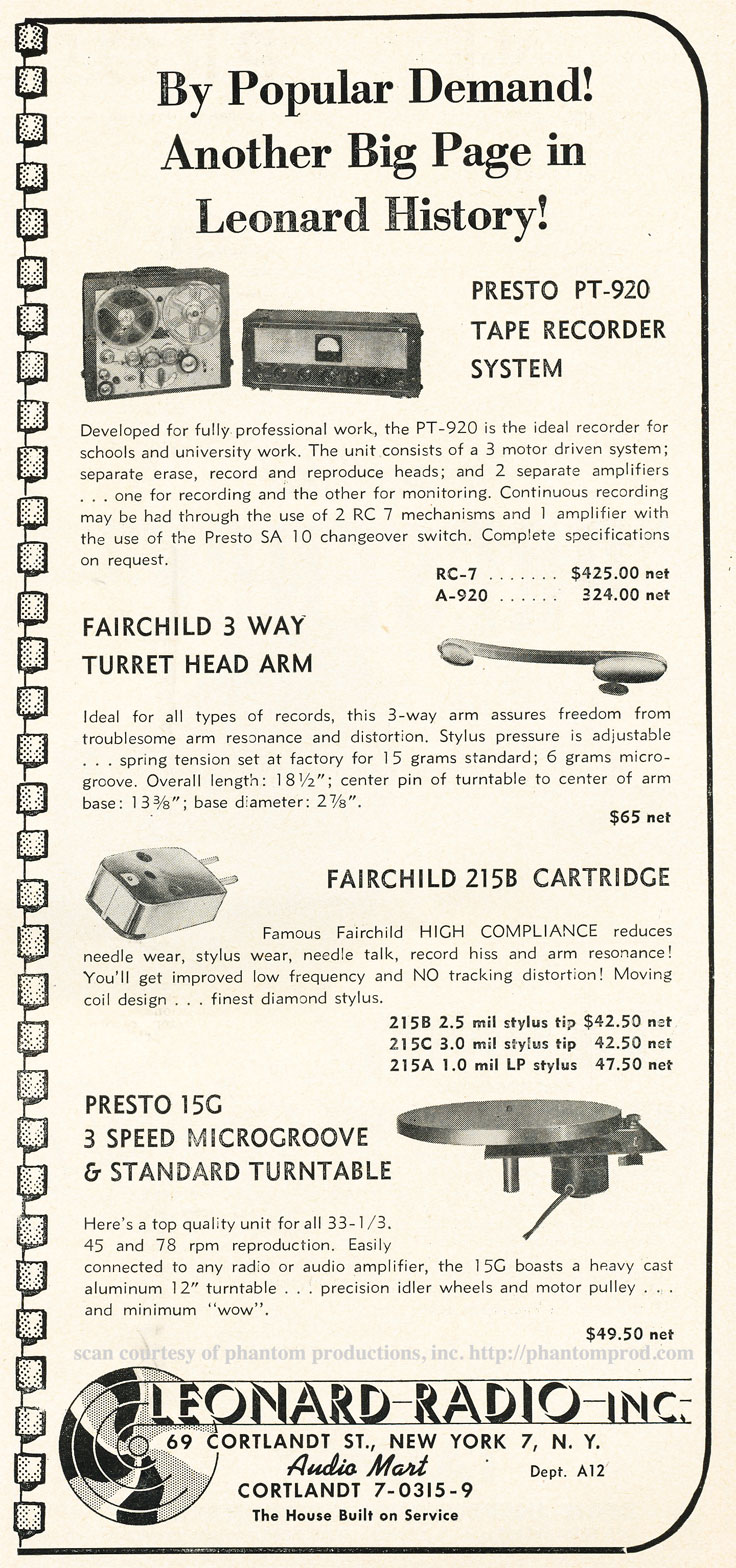
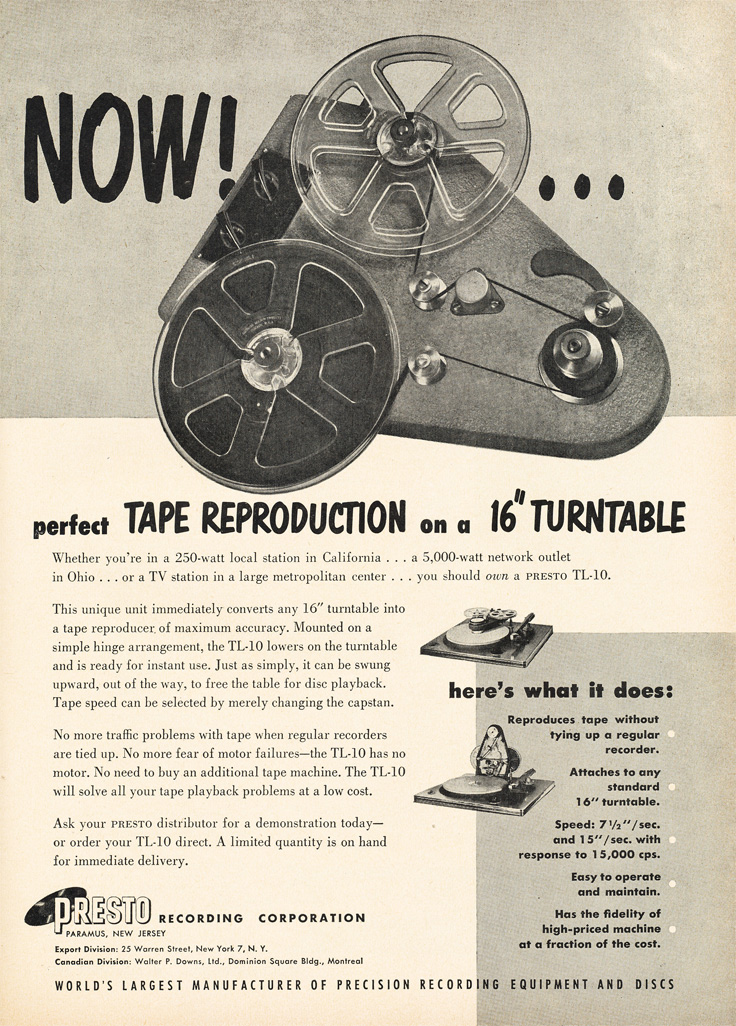
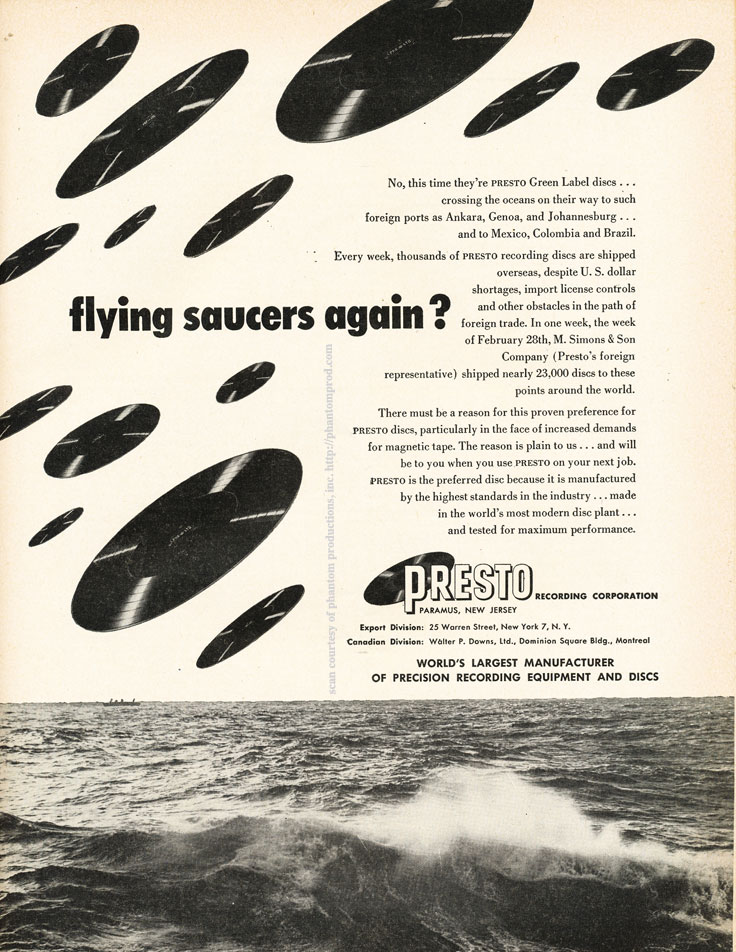
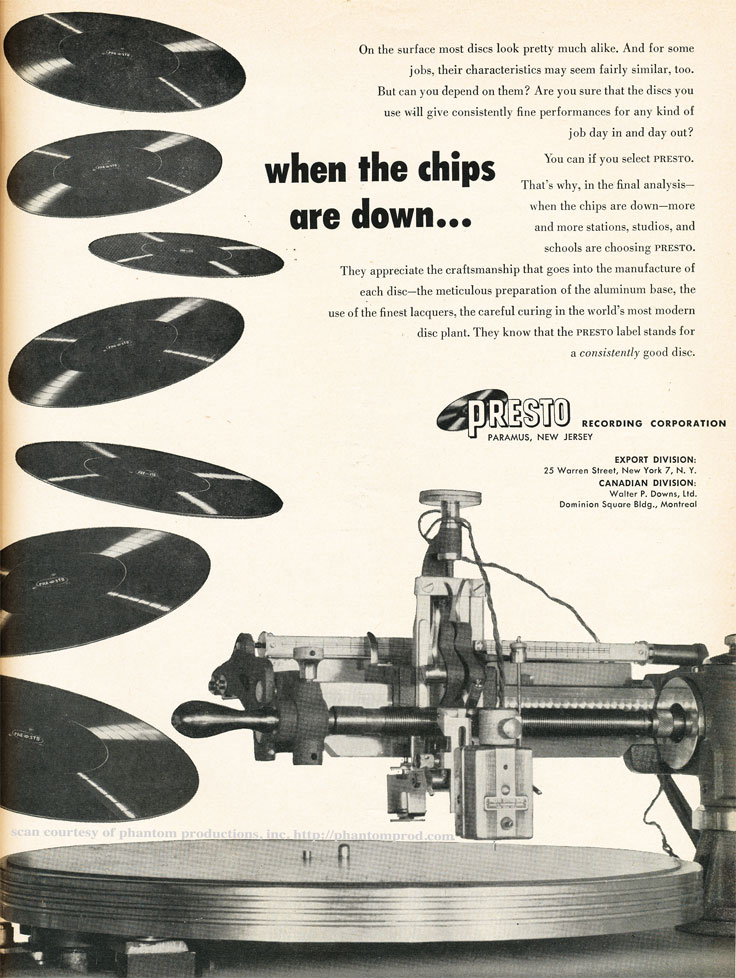
1953


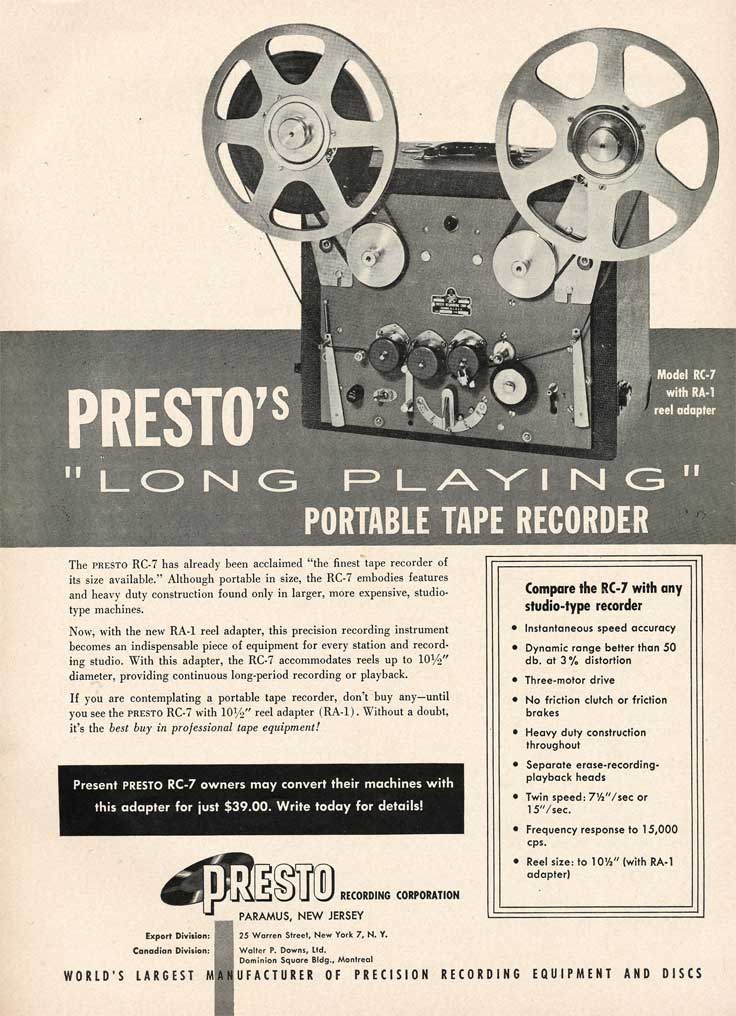
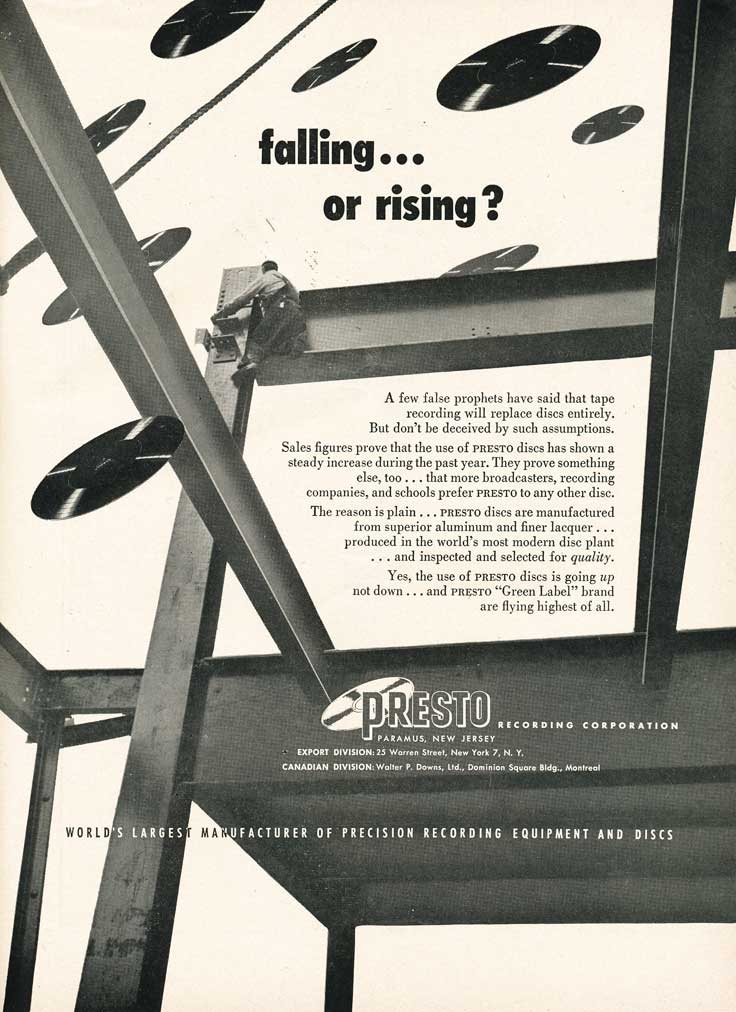
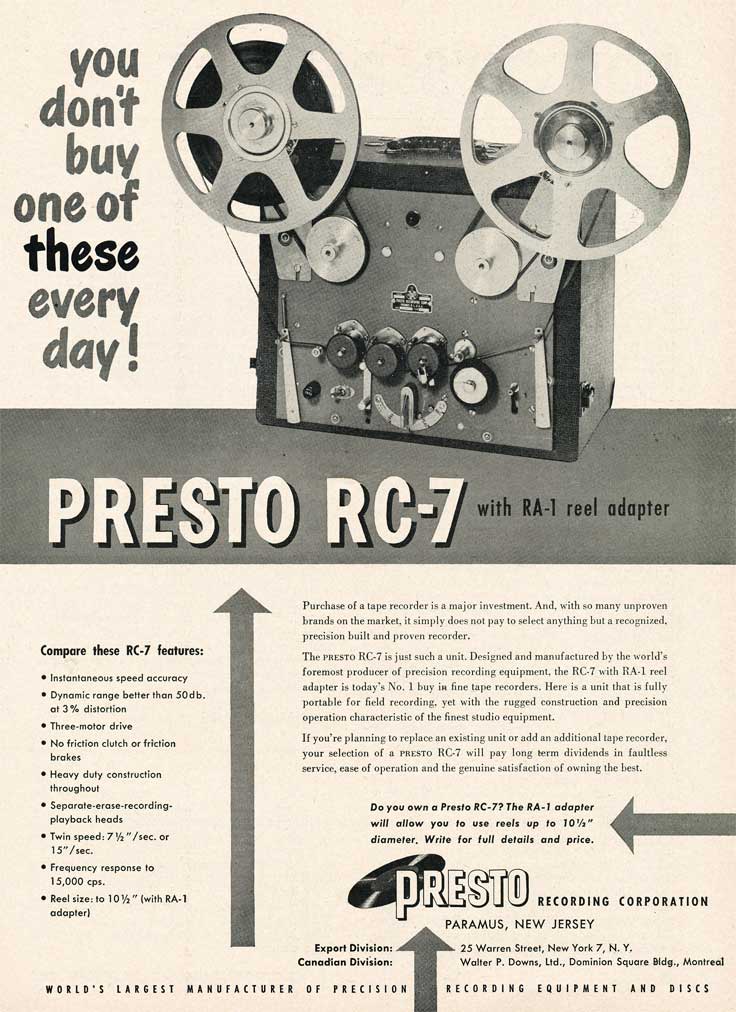

1954


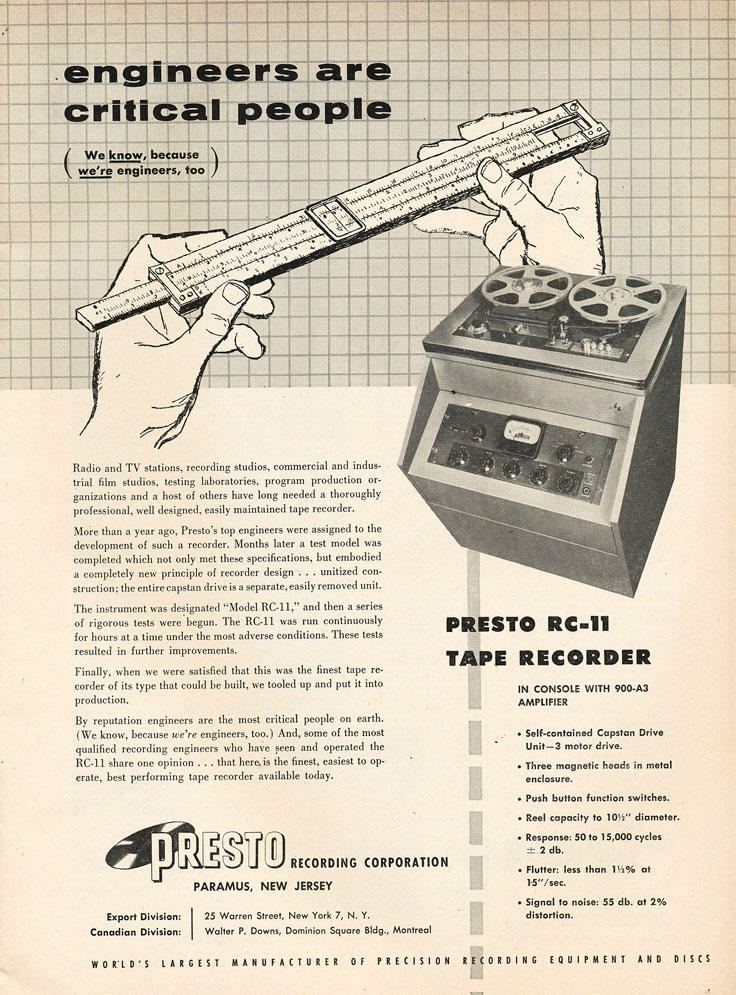
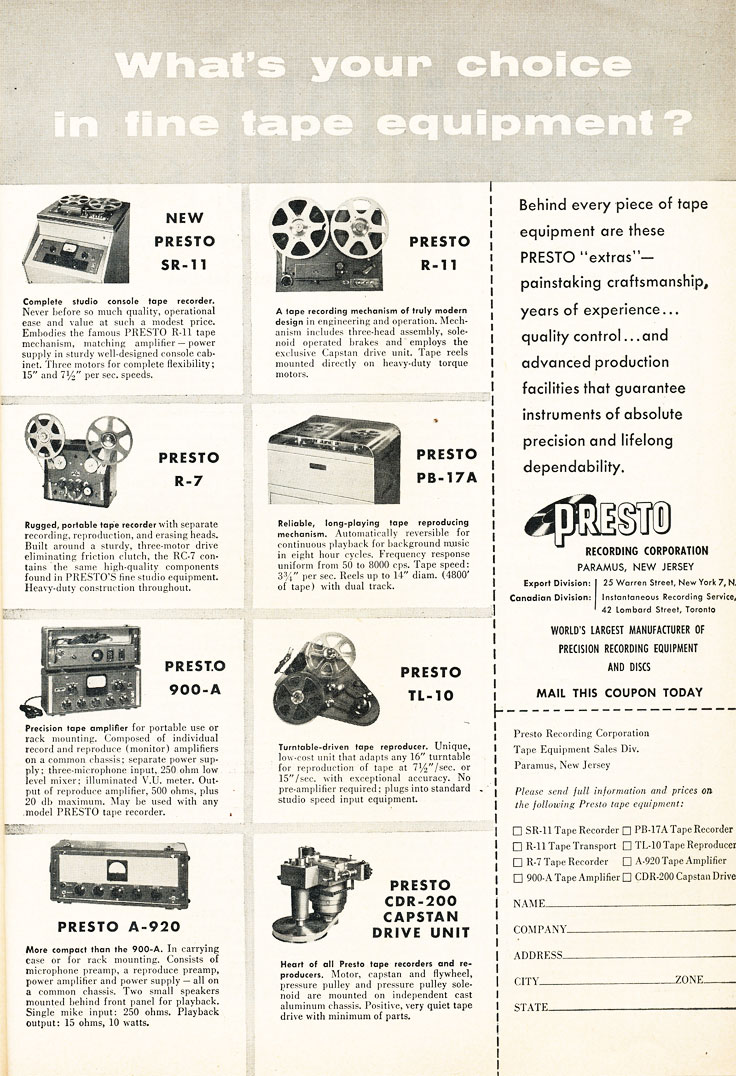
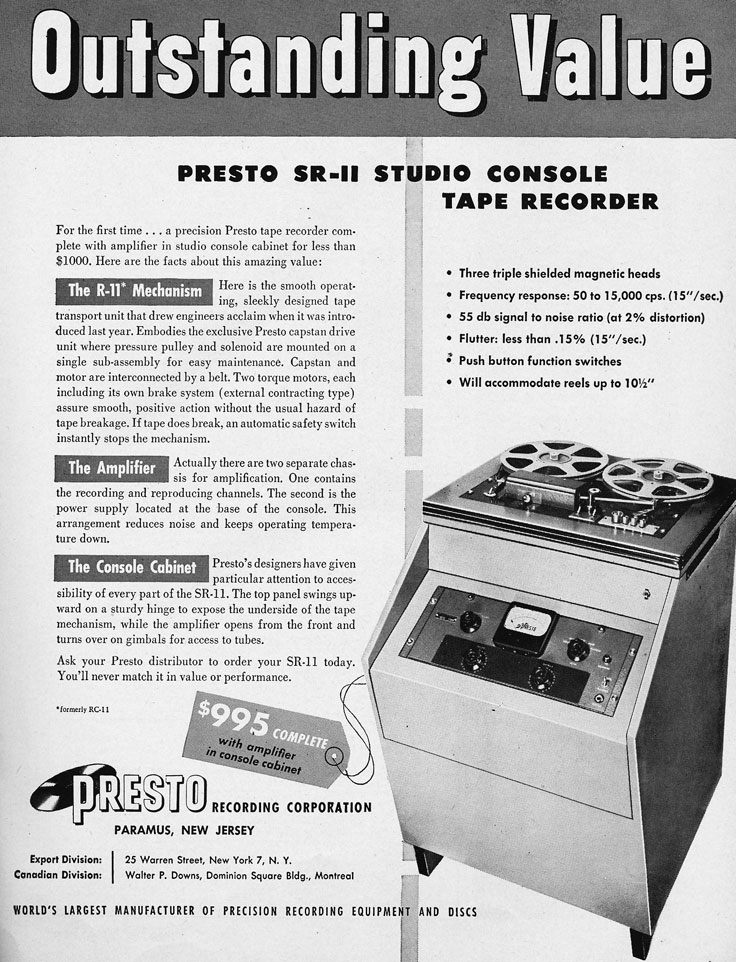
1955
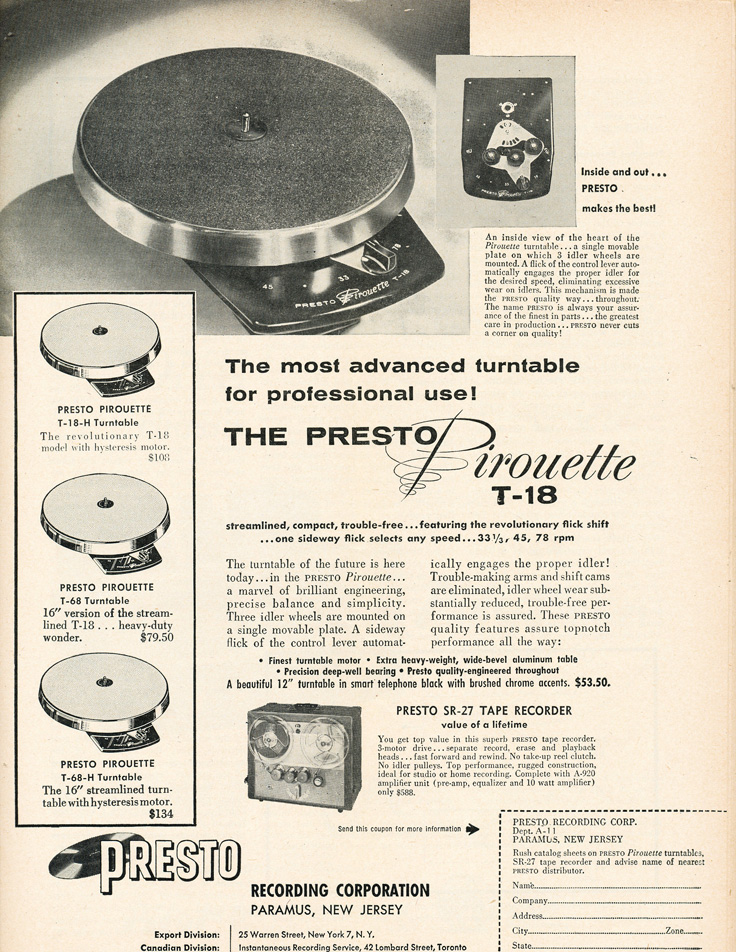
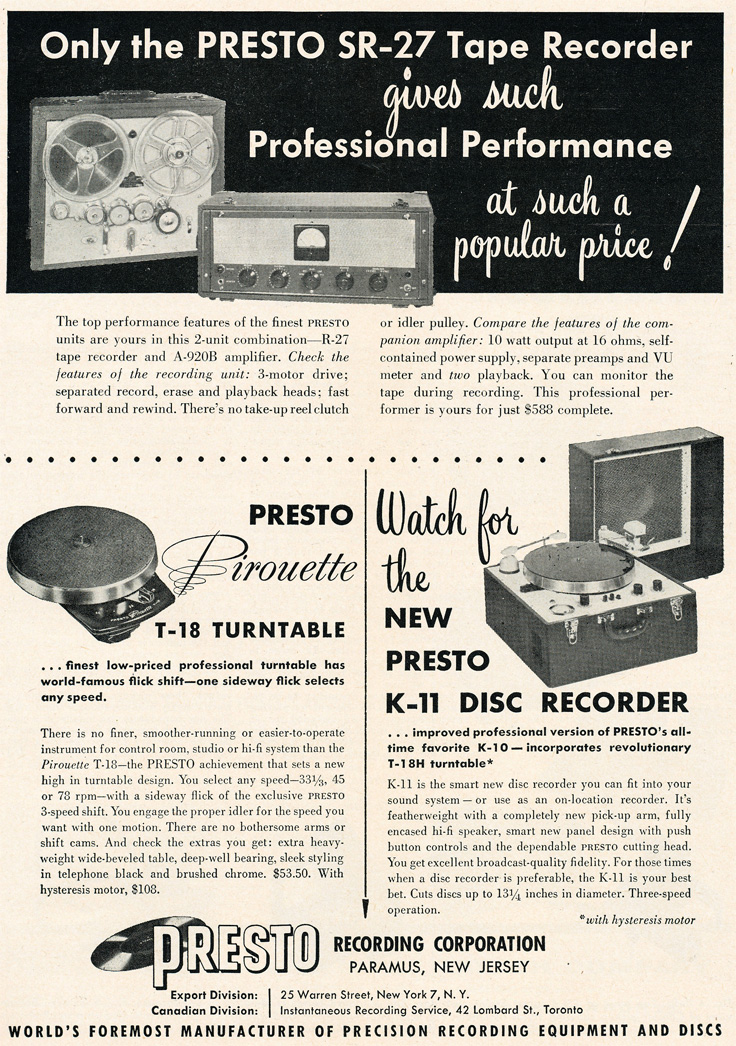
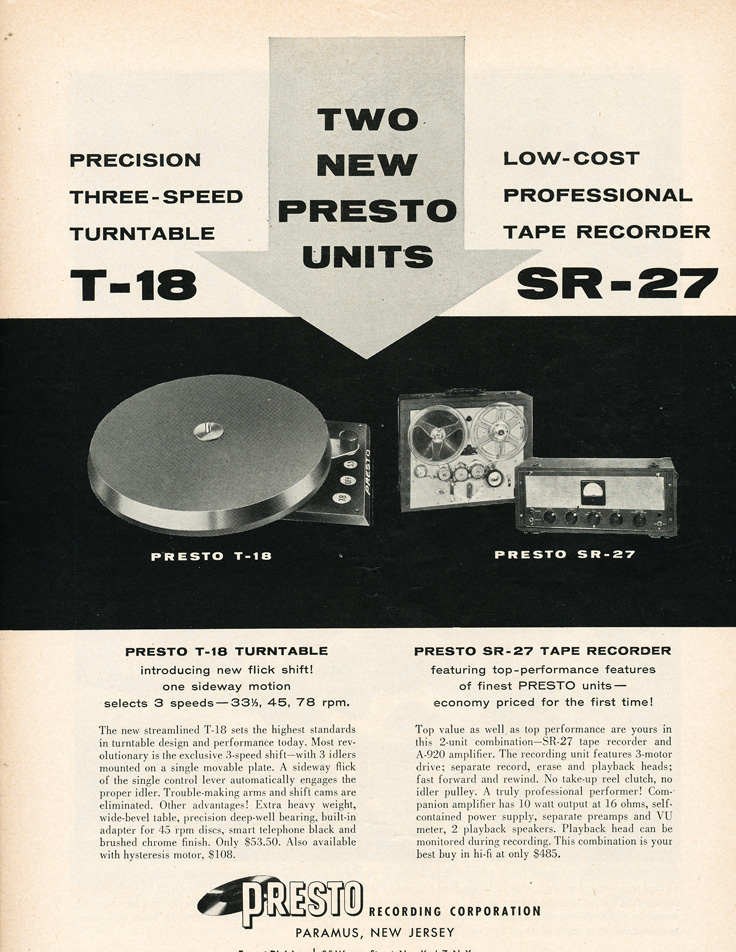
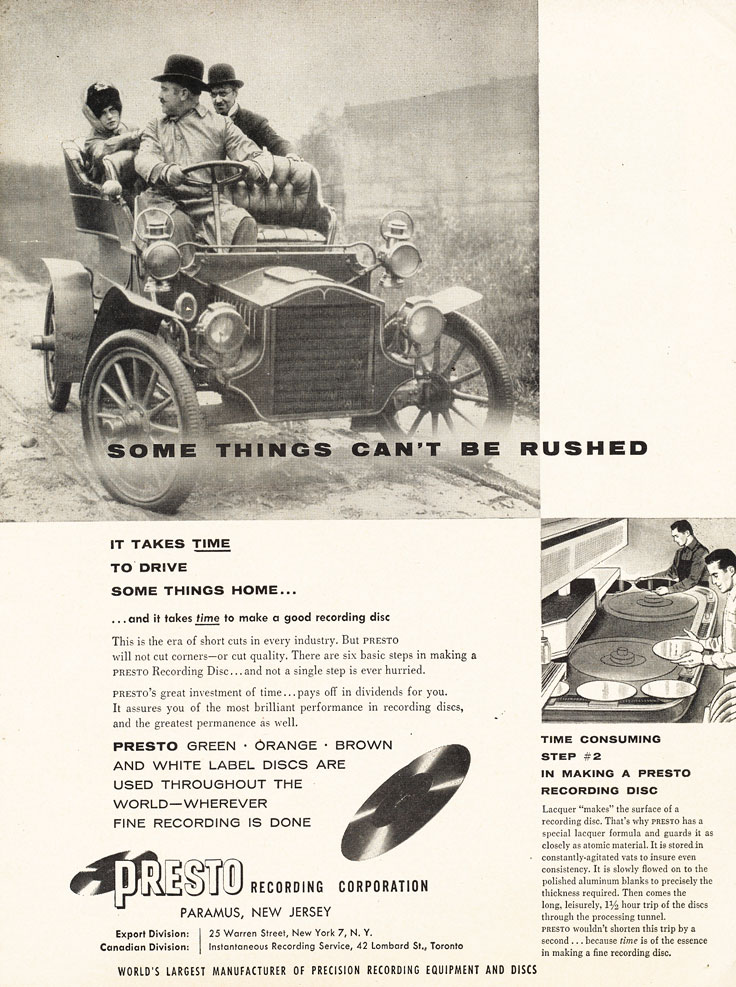
1956
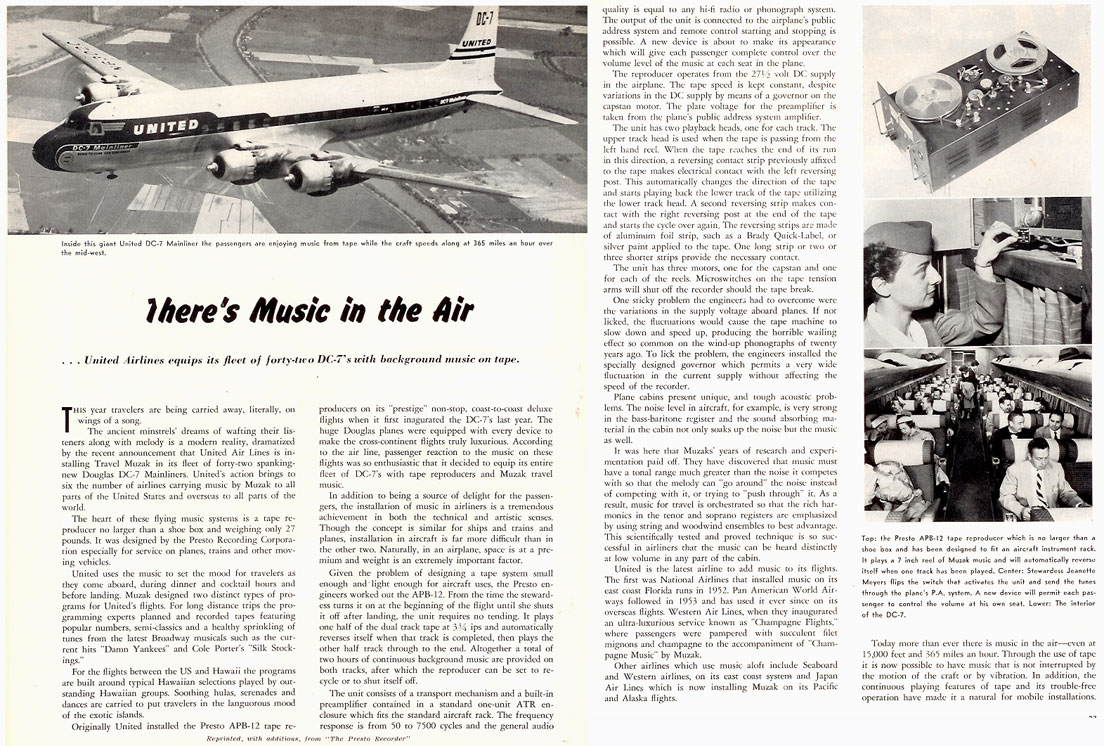
1957
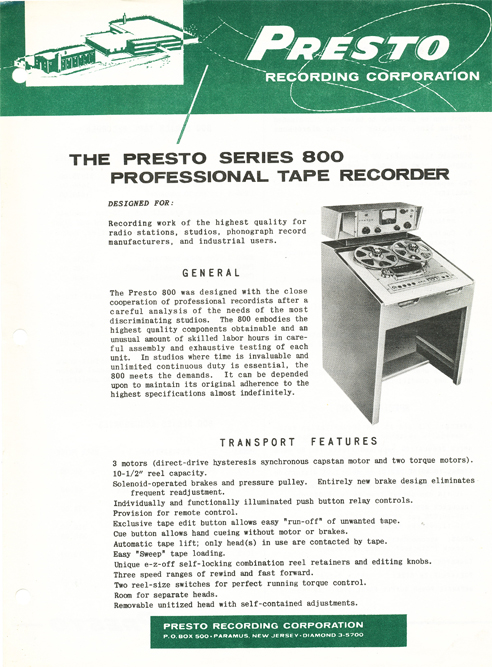
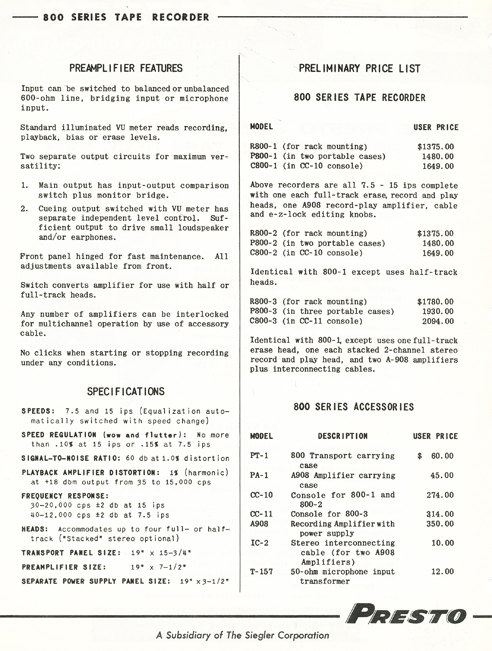
1959
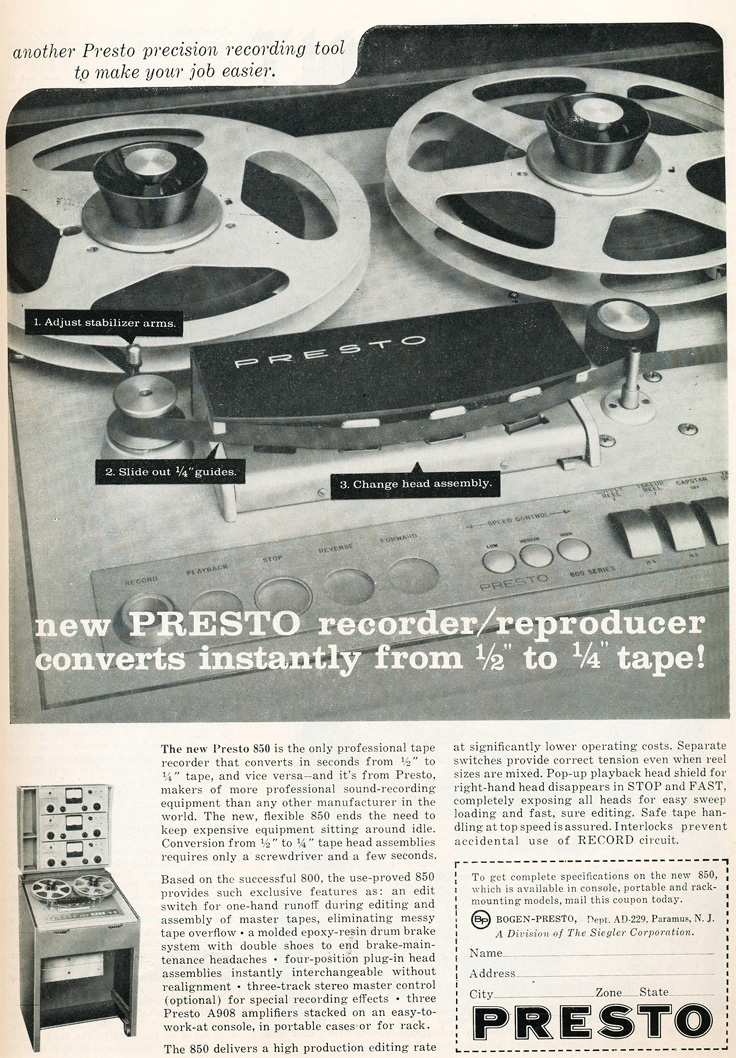
1960
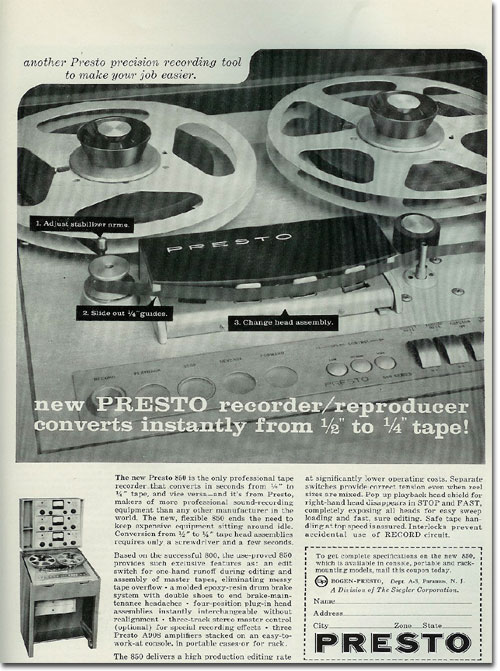
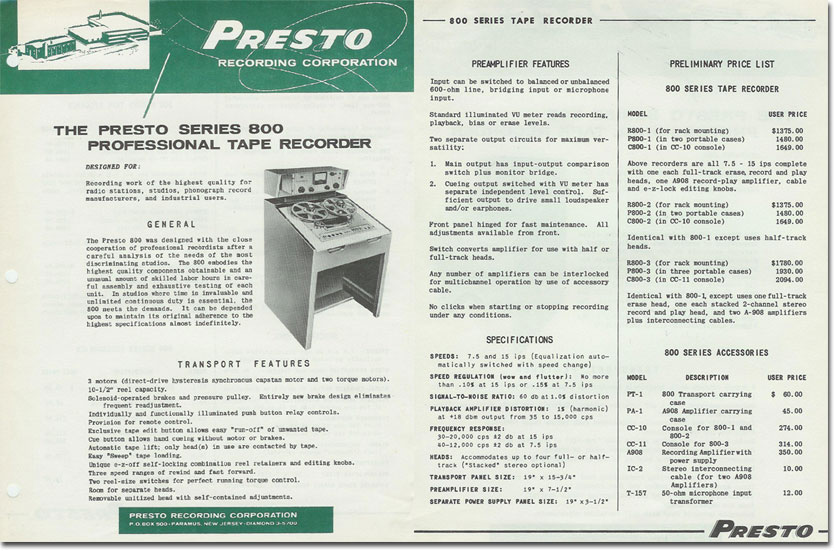
Photos below provided to our museum by others
We appreciate all photos sent to our museum. We hope to successfully preserve the sound recording history. If we have not credited a photo, we do not know its origin if it was not taken by the contributor. Please let us know if a photo on our site belongs to you and is not credited. We will be happy to give you credit, or remove it if you so choose.
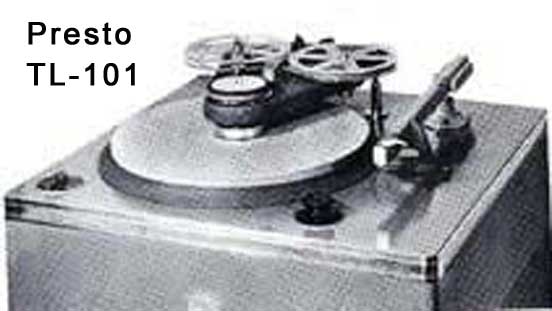
Presto 6N
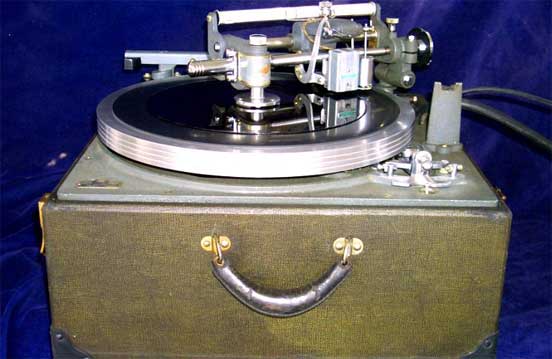
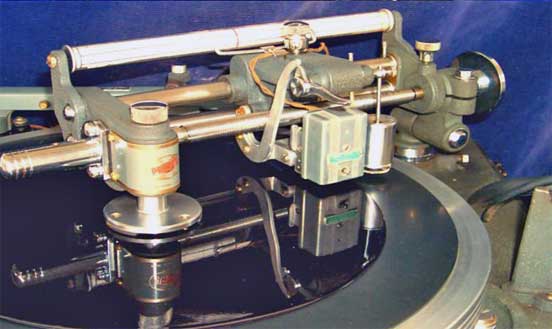
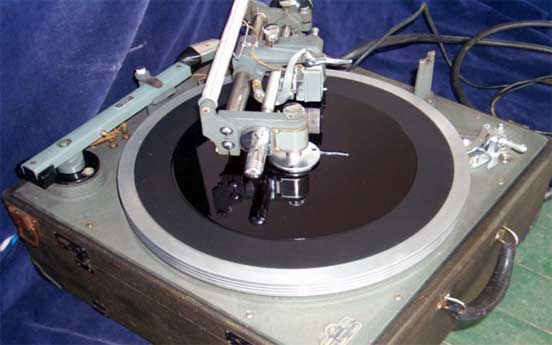
Presto D7
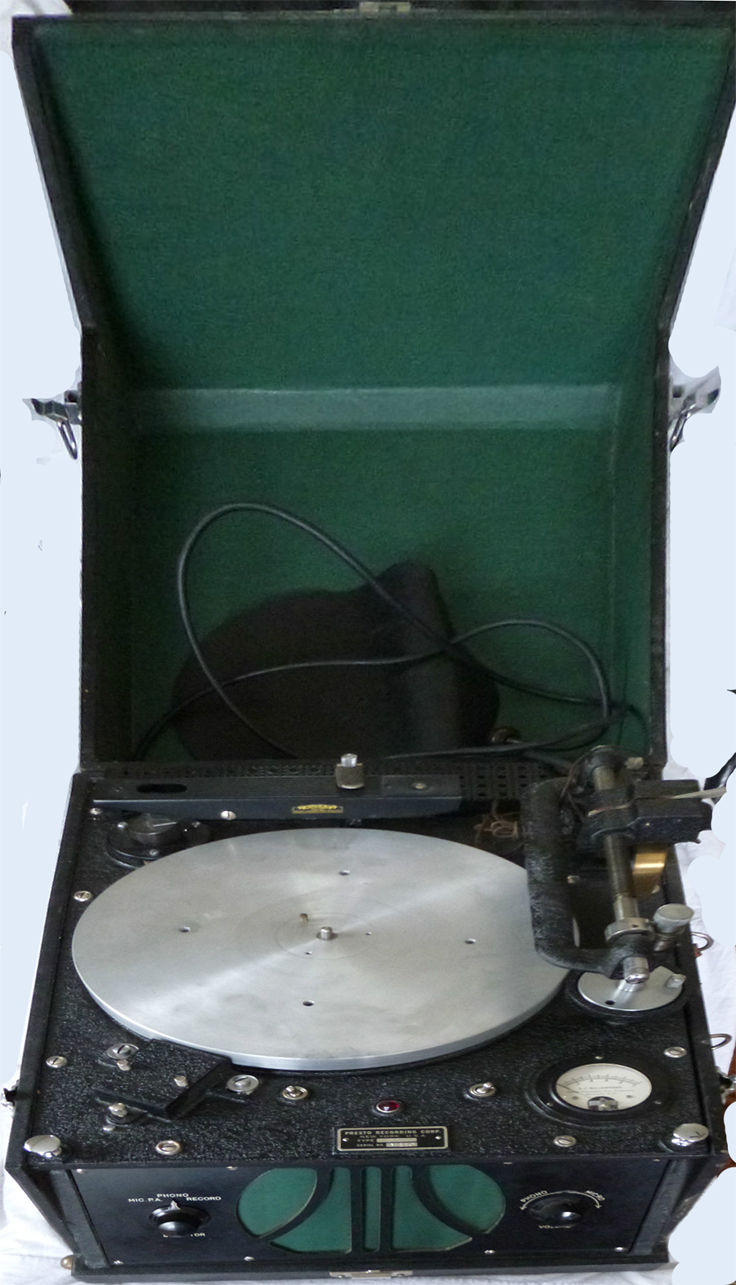
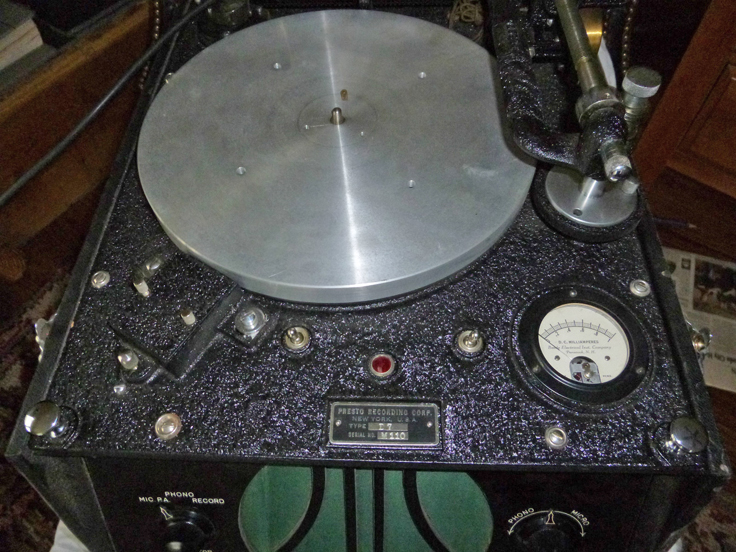

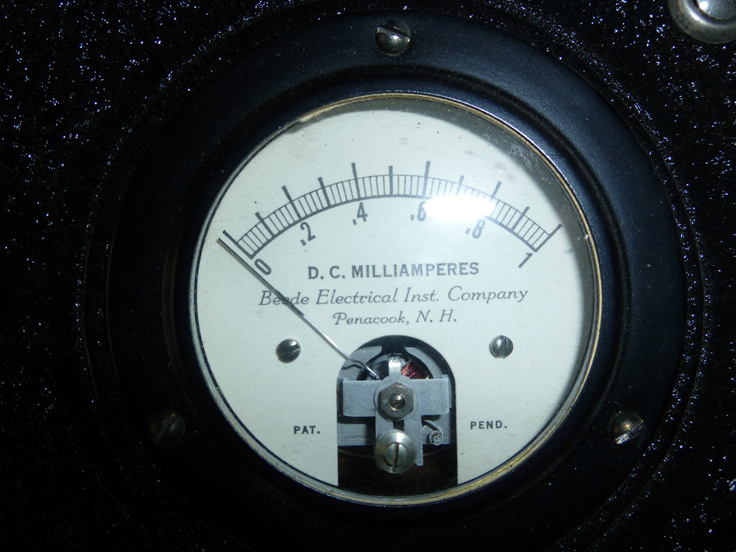
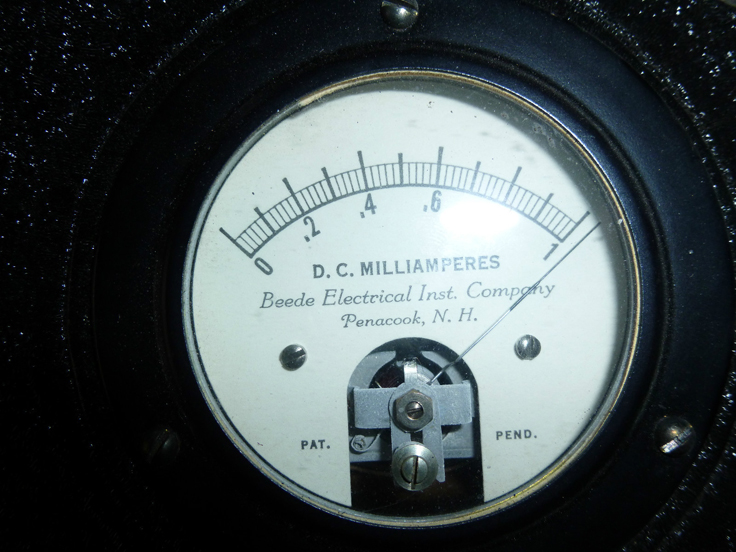
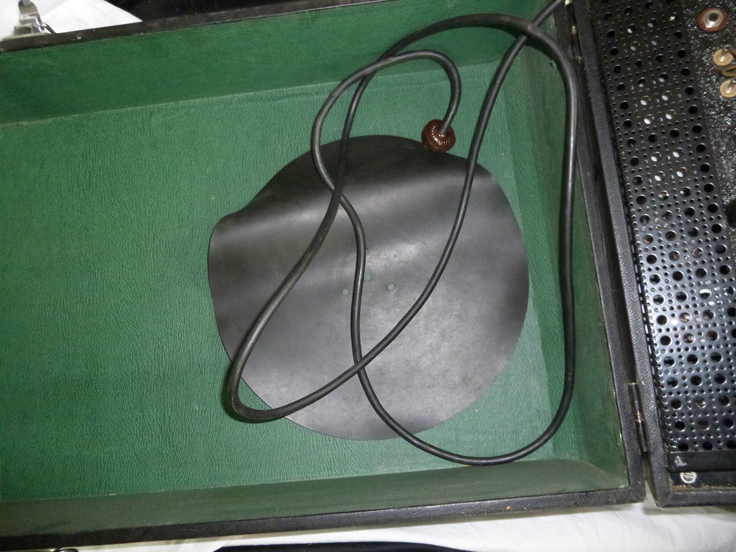
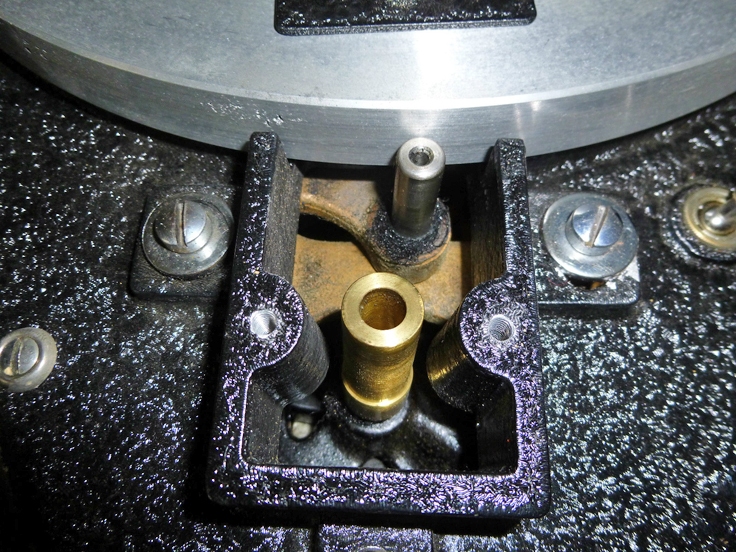
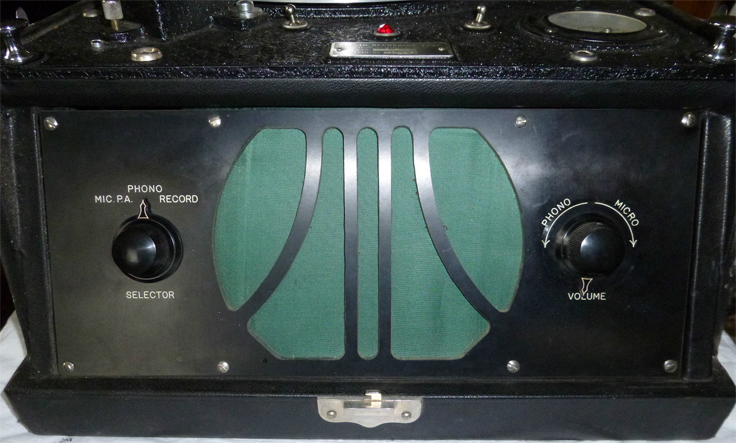
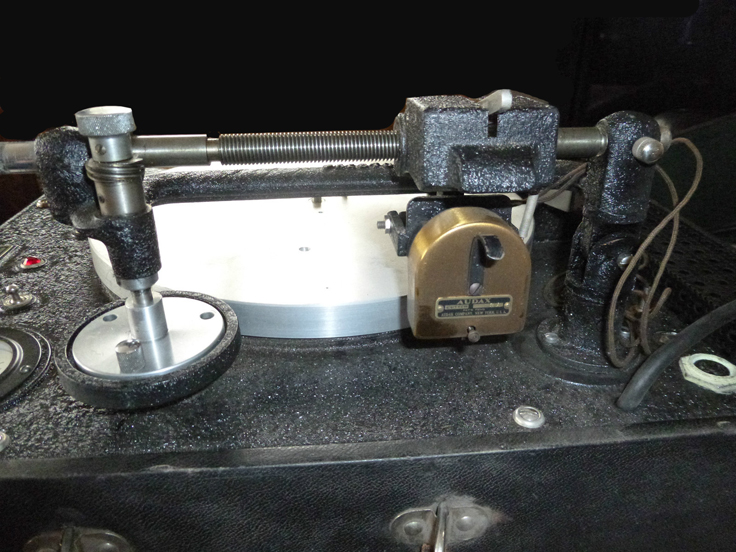
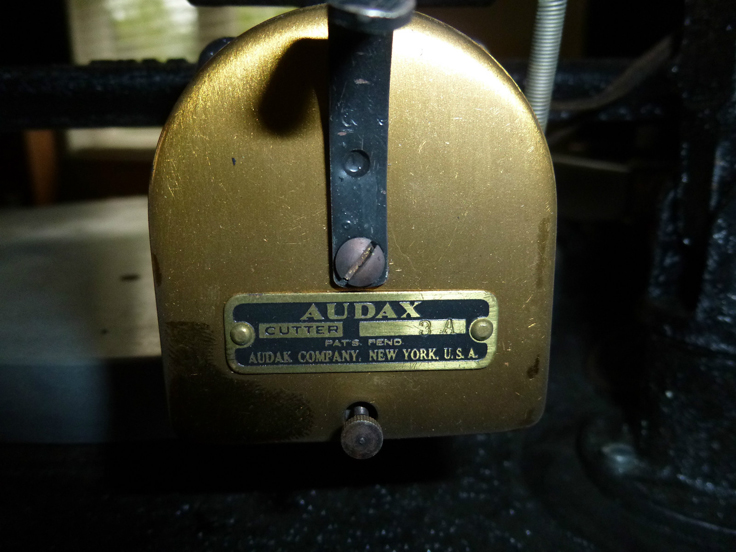
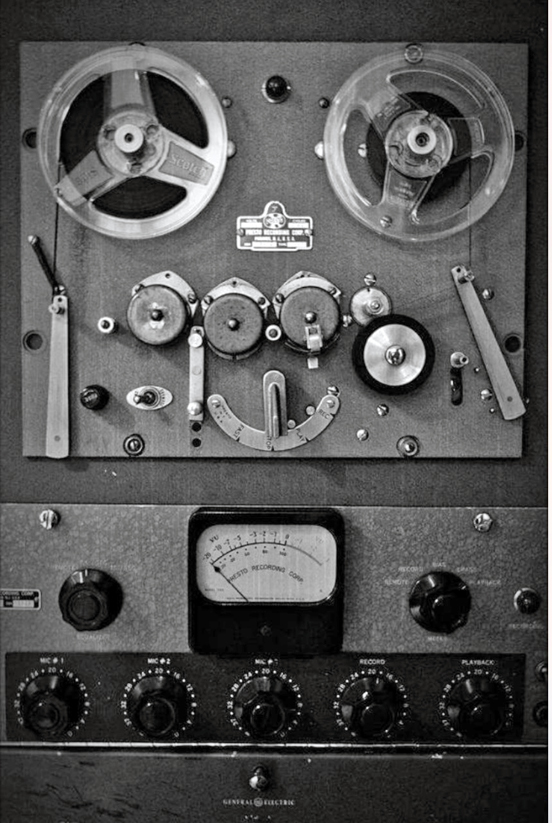
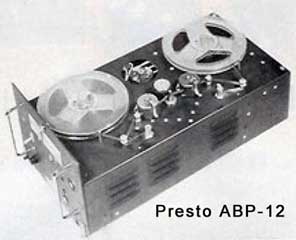
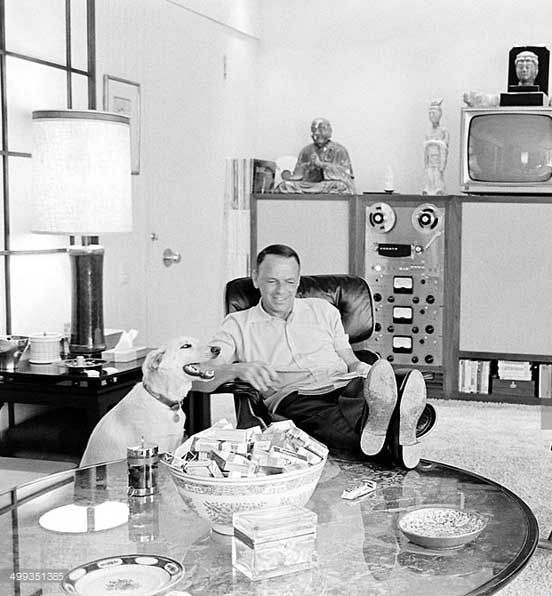
Presto PC1014
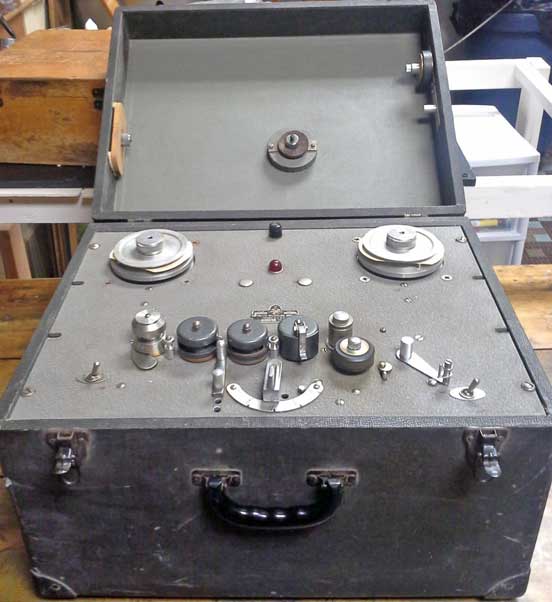
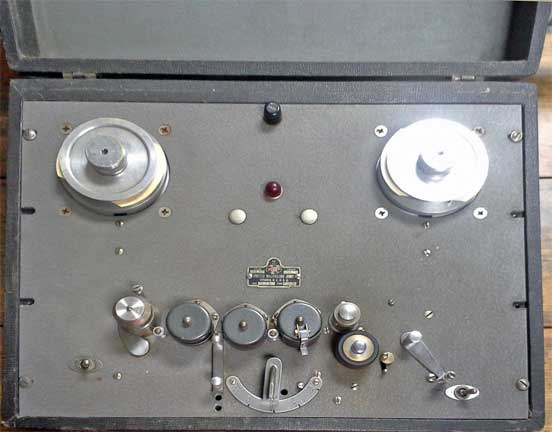

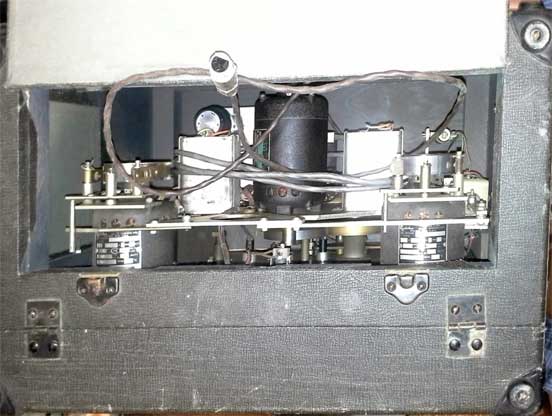
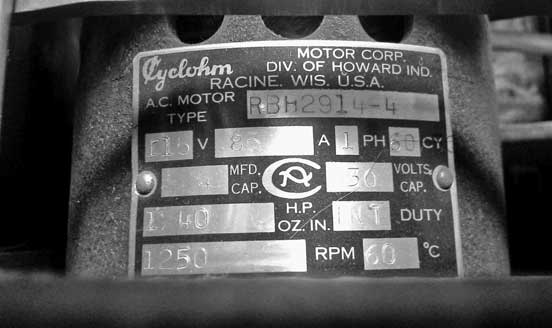
Presto PC1024

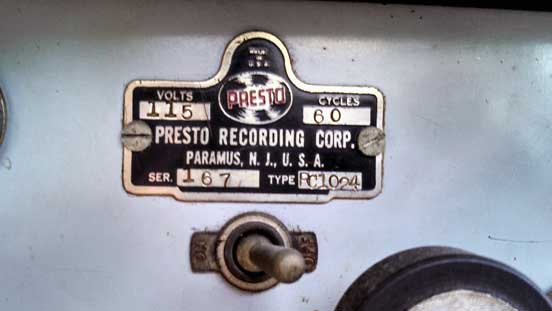
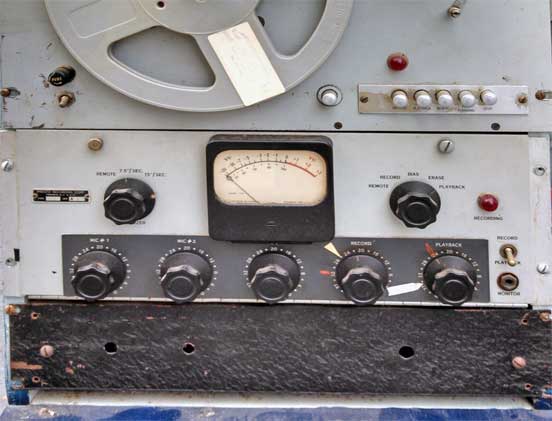
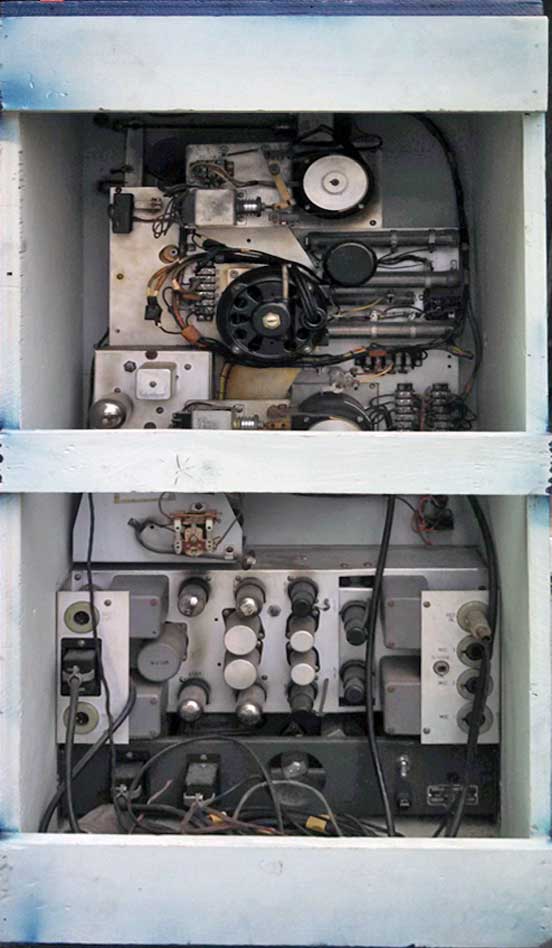
Presto 800 Series
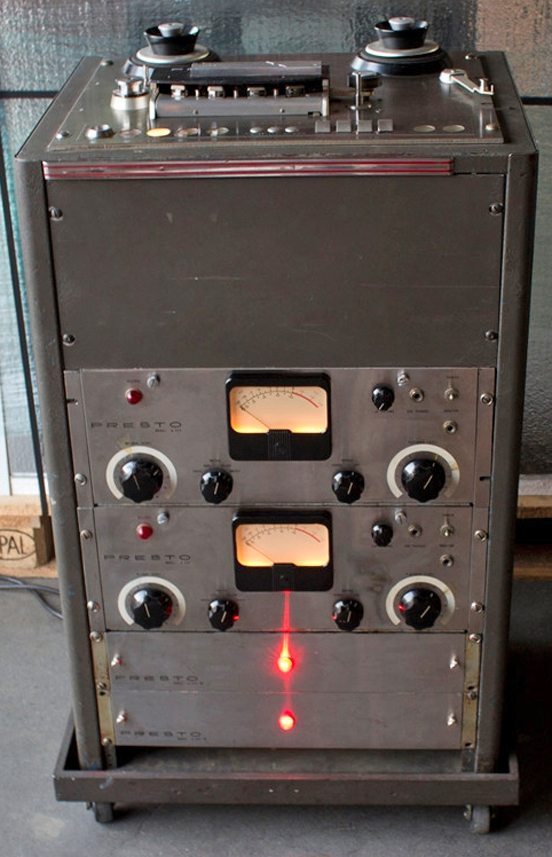
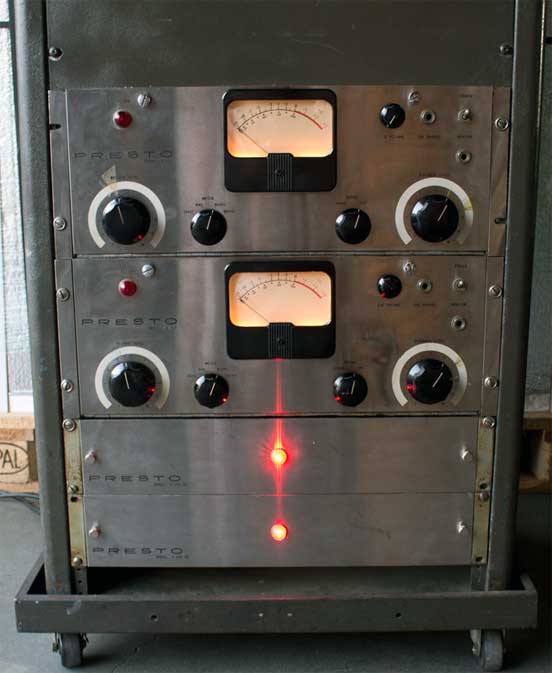
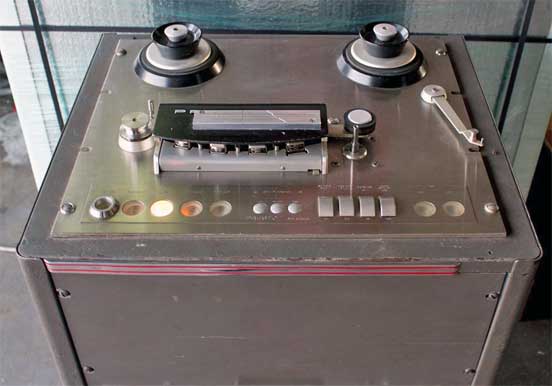
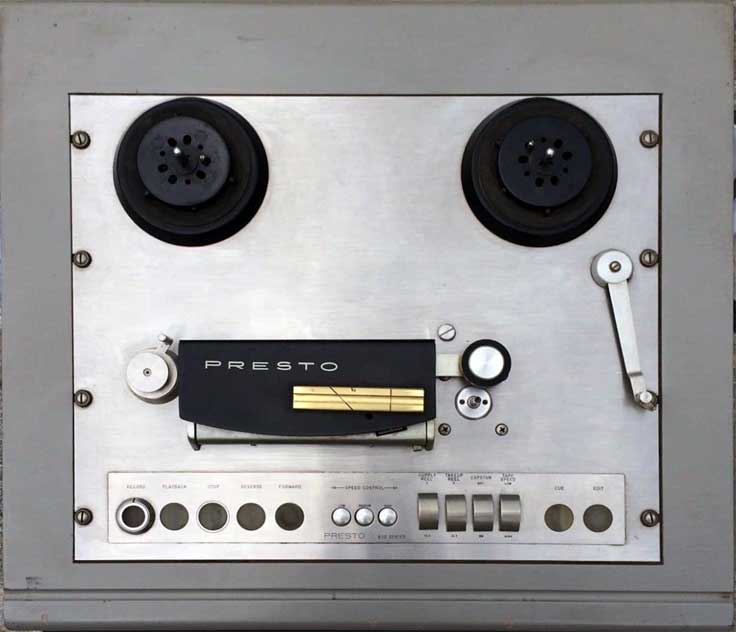

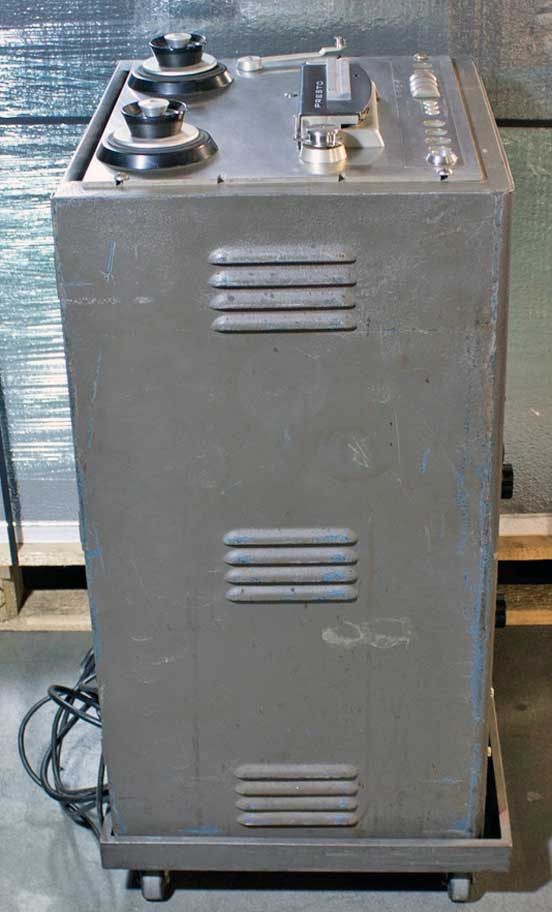
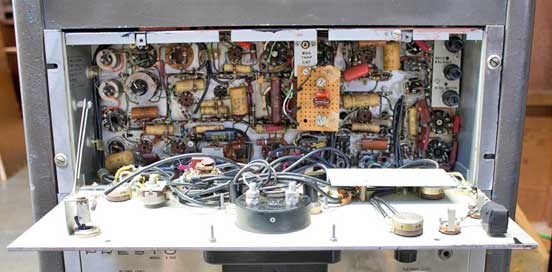
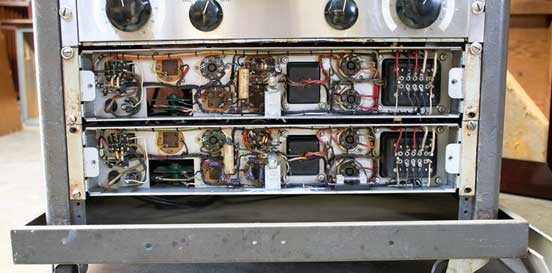
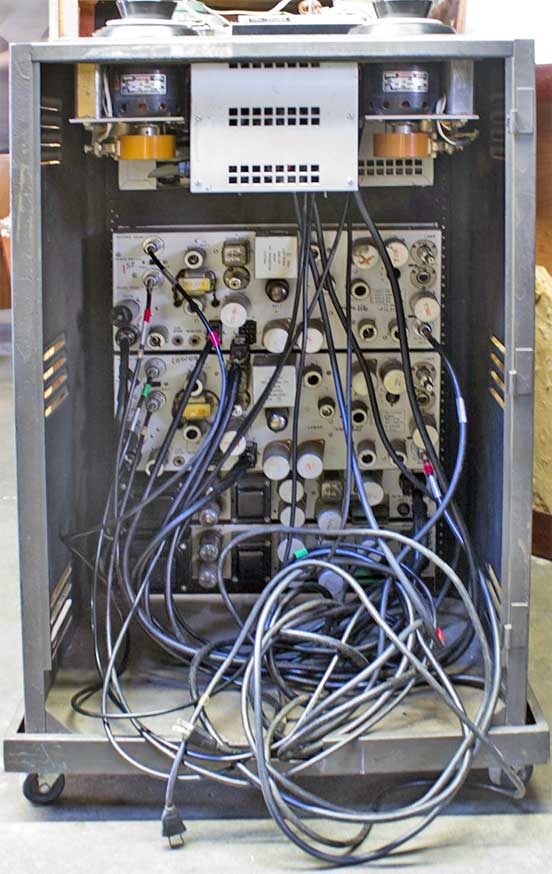
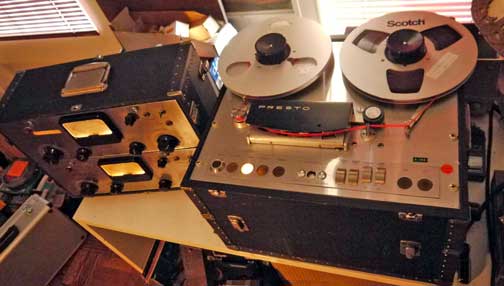
Presto 825 08/17/22 Phillip Chance FB

